
Technicians are the Soul of Research
Highlights from Tech Week 2024
The Long and Short of It: Sexing Spiny Mice
Make Training Easier with a Scruffing Restraint Device
2024 Ben Cohen Recap
Texas Branch 60th Anniversary
March/April 2024



Protect you and your animals with fast, effective and safer disinfectants. ALWAYS ON GUARD Peroxigard com Peroxigard™ is a member of the Virox family of brands. * Applicable to Peroxigard Ready-to-Use and Wipes only (except C.bovis claim with a 2-minute contact time). You must read and follow the instructions on the label for our product and use the product for the particular applications specified on the product label. Product shots have been digitally altered and are not accurate as shown. Refer to product label or reference sheet for a complete list of disinfection claims and additional features. Accelerated Hydrogen Peroxide® and Design are trademarks of Diversey, Inc. B-010923-8292-02F © 2023 Virox Technologies Inc. 1 Minute Disinfect in * Creators of
By Matthew D. Boulanger, VMD, and Patrick A. Lester, DVM, MS, DACLAM
By Kaitlyn Benjamin, BS, LATG
AALAS Connections
Ben Cohen 2024 Management Summit
AALAS Foundations
AALAS Foundation Kicks Off with '25 on 25' Campaign and the 'InTune With Research' Contest
Ad List
By Sarah E. Jones, MLAS, CMAR
By Brenna Jarvie, DVM, BSc, CPIA
Career & Training
Developing Quality Workforce Training: Active Practice
By Kelly LaRue Brackett, Ph.D
2 Laboratory Animal Science Professional March 2024 FEATURES GENERAL INTEREST March/April 2024 Vol. 12 Issue 2 4 6 34 30 38 40 42 44 14 16 22 26 DEPARTMENTS Tech Week 2024 Recap The Long and Short of It: Sexing Spiny Mice (Acomys spp.)
Empowering Excellence: The Role of Autonomy in Motivating Laboratory Animal Science Professionals
Leadership Corner I Really Want You to be Me by Bob Quinn People & Places New hires, promotions, awards, memorials PROfiles Meet Taylor N. King TECH TIPS
Training
Device
Make
Easier with a Scruffing Restraint
Ongoing Use
Virtual Platforms
Monitoring
IACUC: Beyond the Pandemic: Examining the
of
as Part of Post-Approval
EXECUTIVE COMMITTEE
PRESIDENT
Robert H. Quinn
VICE PRESIDENT
James D. Macy
VICE PRESIDENT-ELECT
Jori K. Leszczynski
PAST PRESIDENT
Pamela A. Straeter
SECRETARY/TREASURER
Timothy D. Mandrell
EXECUTIVE DIRECTOR
Thomas L. Joseph
TRUSTEES
District One
Jennifer L. Asher
District Two
Erin E. Vogelsong
District Three
Donna D. Tignor
District Four
Janet Lynn Steele
District Five
Stacy R. Cantrell
District Six
Stephen I. Levin
District Seven
Adrienne Ferguson
District Eight
Katherine M. Marshall
AT-LARGE TRUSTEE
Debra L. Hickman
Kenneth B. Shapiro
Gordon Yee
Jason S. Villano
Thomas L. Joseph Publisher
Ashlee Vaughn Associate Editor
STAFF
Chris Lyons Associate Publisher
Degan Mesler Production Zara Garza Design
Jennifer C. Smith Editor
Heather Lampi Ad Sales
EDITORIAL ADVISORY BOARD
Leslie Birke Louisiana State Univ
Andrew Burich Benaroya Research Institute
Bob Dauchy Tulane Univ School of Medicine
David DeOrnellis Champions Oncology
Penny Devlin Pennsylvania State Univ College of Medicine
Sonia Doss Duke Univ Medical Center
Kelly Ethun Emory University
Glenn Jackson Cornell University
Richard Marble Alpha Genesis Inc.
Elizabeth Nunamaker Charles River Laboratories
MISSION STATEMENT
Sara Oglesby Abbvie
Jane Olin Edwards Life Sciences
Karuna Patil Seattle Children's Research Institute
Amy Pierce Tulane Univ School of Medicine
Stacy Pritt The Texas A&M University System
Laboratory Animal Science Professional (LAS Pro) is the official magazine for American Association for Laboratory Animal Science members. LAS Pro provides a wide range of useful resources and knowledge to the association’s 15,000 laboratory animal science professionals who are involved in advancing responsible laboratory animal care and use to benefit people and animals. All signed articles, including, committee reports, news, and commentary, reflect the individual views of the authors and are not official views of AALAS.
Authorization to photocopy portions for personal or internal use is granted by the American Association for Laboratory Animal Science. Photocopying for purposes of resale or outside distribution is prohibited unless written approval is obtained from the AALAS Director of Communications.
Copyright 2024 by the American Association for Laboratory Animal Science.
Laboratory Animal Science Professional (USPS 010-730) is published bimonthly by the American Association for Laboratory Animal Science, 9190 Crestwyn Hills Drive, Memphis, TN 38125. Periodicals Postage paid at Memphis, TN 38101 and additional mailing offices. POSTMASTER: Send address changes to AALAS, 9190 Crestwyn Hills Drive, Memphis, TN 38125-8538.
HOW TO CONTACT AALAS
AALAS, 9190 Crestwyn Hills Drive, Memphis, TN 38125-8538
Phone: 901-754-8620 • Fax: 901-753-0046 • Email: info@aalas.org • Web: www.aalas.org

March 2024 Laboratory Animal Science Professional 3
THE LEADERSHIP CORNER
I Really Want You to be Me

I became a laboratory animal veterinarian purely by accident. Like many, I wanted to be a veterinarian since I was very young (with a brief detour of thinking I wanted to be an airline pilot when I was 7). I grew up in cities in apartments with little dogs and so my plan had always been to go into small animal practice. Well before vet school I got married and my wife decided she wanted to go to vet school as well, so we ended up going in together. On our second day at Colorado State University, the Dean of the vet school visited us freshmen and said, “In four years when you graduate, there aren’t going to be enough practice jobs for all of you so you might want to think about doing something else.” My first thought was “Why couldn’t you have told us this two days ago” and my second thought was “Practice seems a bit routine for someone with my short attention span so maybe I should look for something else.” I also knew, having been married for 3 years already, that my wife and I were never going to work in or open a practice together without killing each other. During the summer between my first and second years I needed to make money so I got a job working in a research lab on the CSU campus. That’s really when I first learned about the amazing world we all work in. Several internships and one residency later and I’m a lab animal vet. Fast-forward a quick 32 years since that and I’m President of AALAS.
The reason I’m giving you this history lesson is so that you understand it was not my life’s mission to be AALAS President (let alone being in this field at all). I, like many of you I get the pleasure of meeting in my travels, am here because I needed a job. But once I realized the importance we play in both the advancement of science and the welfare of the animals we use, I knew this was more than just a job. This was going to be my career and I wanted to advance as far and as fast as I could (still not really thinking AALAS President).
I mentioned before about my short attention span (I’m also a horrible procrastinator as I frantically work to get this article done before the deadline). This short attention span means I tend to get bored doing the same thing over and over and I’m sure some of you can relate. That’s why I started looking for other ways to be involved with this field besides just my primary job. It has honestly been so long that I don’t even remember what my very first volunteer position was and I have held at least one such position at all times since my career started. I know this sounds like bragging, but that is not the intent. I’ve held all these positions because I sought out the first one and have been terrible at saying no since then. My professional volunteer work has been as rewarding and challenging as anything I do in my real job and has led me ultimately to writing this article.
My point is, if I can do it, anybody can do it. I know I have “veterinarian privilege” that probably made it easier for me, but don’t let your current position stand in your way. Make it known that you want this to be your career and before you know it you’ll be the one writing this article.
 Robert H. Quinn, DVM, DACLAM President American Association for Laboratory Animal Science
Robert H. Quinn, DVM, DACLAM President American Association for Laboratory Animal Science

4 Laboratory Animal Science Professional March 2024

Certification AWARDEES
AALAS recognizes the achievements of the following members who have successfully completed their certification during January-March, 2024
CMAR Certification Recipients
Michelle Bourgeois Rebecca Ferreira
Danielle Stephens Anna Sunseri
LAT Certification Recipients
Kathleen Grace Allen
Briana L Bulger
Kamaria A Davis
Dianne K Larson
Allene R Mangar
Kaitlyn E McDaniel
Rosemarie A Pitstick
Lauren J Rogers
Kara M Whitmore
Melanie Wiggins
Yulan Long
Juan P Lynch Candelario
Isabella A Castro Colmenares
Jessica C Lee
Marissa L Mastromarino
Allaric M P Pennyfeather
Katelyn A Stewart
Alex Taunton
Maggie Tran
Karla Wallach
John Carlo C Dizon
Tiffany Ebmeyer
Monica Christine Eriksen
Daniel B Herrmann
Steven Matthew Horton
Lexi T Oates
Celeste Shearer
Ashiya Chisholm
Allison M D'Amario
Lucas F Eschenburg
Rachel Kataria
Fong Kwok Mung
Holly Anne Ryan Pais
Meghan L Economou
XiuYing Geng
Zaw Min Tun
Mary Alice Niehaus
Hannah A Troy
Samuel Froeschl-Tuttle
Johanna Llewe Jackson
Amanda Chira
Margaret Gaca
Sarah J Larkin
Kameron M Perensovich
Jacqueline C Rushley
LATG Certification Recipients
Mary E Cochran
Natalie Fredette
Kelsey Johnson
Abigail Laureti
Andrea M Sherman
Crystal L Canady
Nicholas J Francisco
Cameron A Slaughter
Chelsea A Calderon
Gustavo A Galaviz
Rachel A Nicholson
Tania K Griffin
Carlen W Hill
Tammy K Hopp
Raquel D Martin
Amanda Michelle Barnard
Anne Quesada
Madison Drushal
Daniela G Grischkowsky
Satori A D Le
6 Laboratory Animal Science Professional March 2024 PEOPLE & PLACES - NEW HIRES, MEETING UPDATES, AND MEMORIALS
ALAT Certification Recipients
Neuzivette Camara Abecassis
Zara Afzal
Kaia Aguilar
Jennifer Albino
Sonni Alvarez
Eva Alvarez
Gerardo B Alvero
Tatiana M Angeles
Alyssa M Arrambide
Jose R Ayala Cortez
Kaeley N Benedict
Stephanie Berg
Logan R Bern
Alysia D Berube
Brendan E Blake
Emily A Blanton
Jasmine R B'Lanton
Jane A Branca
Madison L Brien
Roxanne E Brown
Avy Burek
Leira A Burgos-Arzola
Heather N Burton
Austin Bydalek
Clarissa Caballero
Jessica Carling
Christopher M Chaffin
Ling Chen
Yesol Choi
Kaylin Cornett
Maria E Corona
Ellen K Coughlan
Brittany Crump
Emily J DeGeyter
Alexander B Detwiler
Billie-Jo L Dowling
Meaghan Emery
Leah Erickson
Darya S Evans
Logan Fehrenbach
Anthony G Fernandez
Anna M Fojtik
Kayla Foster
Alejandro Garcia
Breanna Garon
Nina K Gilbert-Uhlman
Julissa M Gomez
Chengkai Guo
Saba Hamedi
Emily Hamel
Jacqueline Harwood
Isabel H Hasson
Cindy Hayward
Tara L Henry
Medardo Hernandez
Darryl Holiday
Sasha Huda
Katja Hugsted Hallman
Dashara J Jackson
Geriel A Jennings
Elise Joachim
Crystal Leigh Johnson
Julie Karlsson
Sheng Khang
Hailey P Kinimaka
Kaitlyn Kuzmic
Victoria E Lefferts
Sophie Lenoir Cestelos
Mayllynne Lopez
Jessica A Maas
Aurora M Martinez
Jessica L Mason
Lesly E Mendoza
Julie Ella Merta
Lindi Morrison
Karina J Munguia
Luke G Overholtzer
Lynard D Parker
Chelsea Pavuk
Alexis Pearlman
Nailah Peets
Gisela Opal Perez
Kristen N Philippart
James Phillips
Hailey N Reffitt
Tiffani R Rinehart
Nikki Robbins
Myia Robinson
Daniel Rodriguez
Steven Romano
Jeffrey Roth
Daniela Salinas
Andrea M Sandoval
Victoria C Sansevero
Corinne Sharpe
Katrina L Sheffield
Amanda M Shellhart
Tyler Shepard
Matthew Shiramizu
Charlotte Snow
Amanda Solaris
Abel Sousa
Roshane J Soverall
Kimberly M Spadafora
Theodore Thompson
Orlando Torres
Charlotte Troup
Piper Van Muylwyk
Kenny H Vang
Jarrett VanHavel
Josselyn N Vasquez
Mai V Walters
Natasha M Washko
Monica A Wiemels
Emma Woodcock
Jamique Young
Laurel E Zeigler
Bian Zhaoman
March 2024 Laboratory Animal Science Professional 7
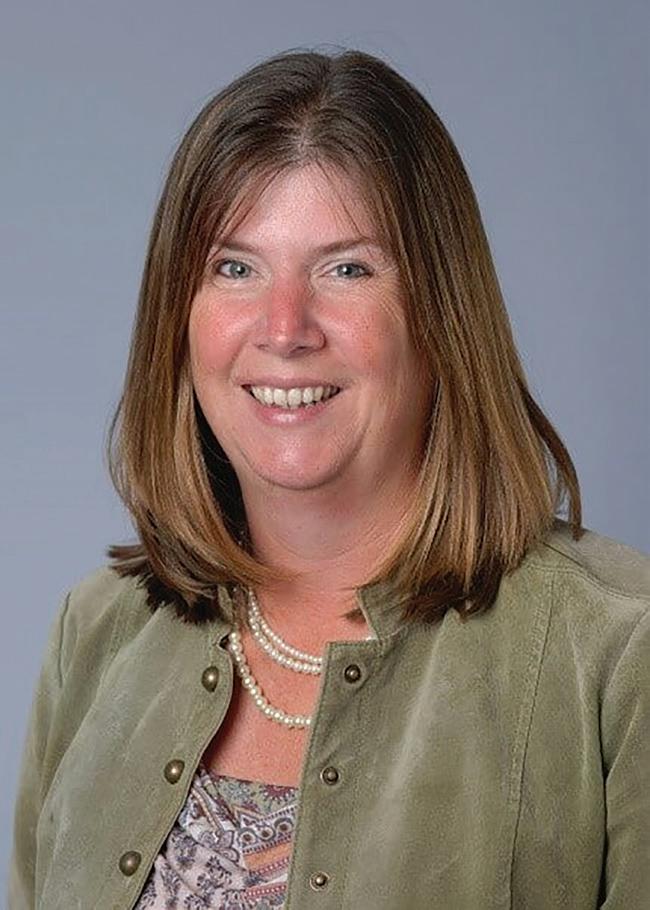
2024 AVMA Animal Welfare Award Recipient Debra Hickman
The AVMA Animal Welfare Award recognizes an AVMA member veterinarian for achievements in advancing the welfare of animals via leadership, public service, education, research, product development, and/or advocacy. The 2024 award recipient is Dr. Deb Hickman.
Dr. Hickman is being honored for her scholarly contributions, her focus on refining methods of animal experimentation for the betterment of animal welfare, and her commitment to improving methods for measuring stress in mice and rats. In addition, Dr. Hickman’s work to minimize pain and distress during euthanasia of laboratory animals impacts millions of animals across the globe. Her new role as the Global Director for AAALAC International ensures that animal care programs meet the highest standards of animal welfare and is a testament to her continued dedication to the welfare of animals.

AAALAC International Appoints Dr. Deb Hickman Global Director
AAALAC International has appointed Deb Hickman, DVM, MS, DACLAM, DACAW, as its new Global Director. In this position, Dr. Hickman will oversee, provide direction, and manage the activities of AAALAC’s worldwide accreditation program, as well as assist the CEO in implementing the policies and programs of the organization. She will also serve as an organization spokesperson, representing and promoting AAALAC International’s mission around the world.
Dr. Hickman has over 24 years of experience in veterinary and academic laboratory animal medicine. Before joining AAALAC, Dr. Hickman was the Attending Veterinarian, Associate Vice President for Animal Resources, and a clinical professor at Purdue University College of Veterinary Medicine. She has also served as the Attending Veterinarian and Director of the Laboratory Animal Resource Center at the Indiana University School of Medicine in Indianapolis, Indiana.
Credit: AAALAC International
8 Laboratory Animal Science Professional March 2024 PEOPLE & PLACES - NEW HIRES, MEETING UPDATES, AND MEMORIALS

SPONSORSHIPS NOW AVAILABLE!
2024 AAALAC International Fellowship Award
Due to the unique nature of the program, only a limited number of sponsorships are made available. Inquire today: fellow@aaalac.org
The AAALAC International Fellowship recognizes two outstanding individuals each year—one IAT Registered (RAnTech) and one AALAS or CALAS (Canada) Registered (RALAT, RLAT, RLATG, CMAR, ARLAT, RMLAT)—who have made (or have the potential to make) significant contributions to the field of laboratory animal care and use. The AAALAC Fellowship is supported by program partners including AALAS, IAT and NIH. Each Fellowship recipient receives a week-long transcontinental trip to visit other research facilities, network with and learn from colleagues in other countries, and attend a prestigious professional conference. Past recipients have called the Fellowship experience “life-changing,” “the highlight of my professional career,” and “the most unique opportunity in our industry.” AAALAC International is seeking a limited number of sponsors to help support this meaningful and impactful program. The following sponsorship opportunities are available this year:
2024 Sponsorship Opportunities
$5,000—Platinum
Includes name and logo recognition as a Platinum-Level Sponsor in all award communications including applicable websites, newsletters, media, social media, conference and awards presentations, and awards program. Receive five reserved seats at the AAALAC International Awards Luncheon at the National AALAS Meeting in Nashville, Tennessee in November.
$3,750—Gold
Includes name and logo recognition as a Gold-Level Sponsor in all award communications including applicable websites, newsletters, media, social media, conference and awards presentations, and awards program. Receive three reserved seats at the AAALAC International Awards Luncheon at the National AALAS Meeting in Nashville, Tennessee in November.
$2,500—Silver
Includes name recognition as a Silver-Level Sponsor in all award communications including applicable websites, newsletters, media, social media, conference and awards presentations, and awards program. Receive two reserved seats at the AAALAC International Awards Luncheon at the National AALAS Meeting in Nashville, Tennessee in November.
$1,250—Bronze
Includes name recognition as a Bronze-Level Sponsor in all award communications including applicable websites, newsletters, media, social media, conference and awards presentations, and awards program.
Multi-year sponsorships are welcome! Details provided by AAALAC International upon request. Thank you to all past sponsors, your support makes this unique program possible. Inquire today:
For more information on the Fellowship program: www.aaalac.org/awards/fellowship-award/
March 2024 Laboratory Animal Science Professional 9
+1.301-696-9626
©2024 AAALAC International | www.aaalac.org | fellow@aaalac.org
fellow@aaalac.org /

TBAALAS Celebrates 60th Anniversary Annual Meeting
By Katie Clark, MEd, RLATG
The Texas Branch AALAS held its annual meeting on February 7-9 in San Marcos, TX. This year TBAALAS celebrated its 60th anniversary with the theme “Climbing the Ladder in Lab Animal Medicine”. Attendees received a commemorative 60th anniversary wine glass to celebrate the event. This year’s 3-day meeting was packed full of platform presentations, posters, panel discussions, an offsite cave tour, and the Annual Lifesize Hungry Hungry Hippo Tournament between vendors and attendees. The new President, Keely McGrew, and her board were installed, and the Awards Committee presented branch members and vendor awards during the Awards Banquet. No meeting goes without its mishaps (the Past President forgot the gavel!), but the branch took it in stride, using a meat tenderizer as a replacement!


10 Laboratory Animal Science Professional March 2024
2024 TBAALAS Award Winners
Technician Scholarship Award
Jordan Garcia – Baylor College of Medicine
Animal Care Systems: Presentation Award
Julie Wood – UT Southwestern Medical Center
Alternative Design: Presentation Award
Alexandria Freyburger – Texas Tech University
Inotiv: Presentation Award
Julie Roller – UT Southwestern Medical Center
LGL: Presentation Award
Kimberly Bagley – Inotiv
Quip Laboratories: Presentation Award
Medardo Hernandez – Nuralink
Level I “Rookie” Award
Tiffany Gonzales – Houston Methodist
Level II “Non-Supervisor” Award
Kandice Lozano – Rice University
Level III “Supervisor” Award
Jennifer Teague – UT Southwestern Medical Center
Tecniplast: Cagewash Excellence Award
Cindy Wang – University of Texas, MD Anderson Cancer Center
Allentown: Manager of the Year Award
Ena Gutierrez – UNT Health Science Center
Charles River: Outstanding Clinical Veterinarian Award
Dr. David Andrews – Baylor College of Medicine
Helen Jordan Vendor Award
Brian Geyer – Tecniplast
President’s Award
Julie Roller – UT Southwestern Medical Center



March 2024 Laboratory Animal Science Professional 11 PEOPLE & PLACES - NEW HIRES, MEETING UPDATES, AND MEMORIALS
PRIM&R Welcomes New Board Member, Guy Mulder

Guy Mulder, DVM, MS, MBA, DACLAM is the Executive Director of Veterinary and Professional Services for Research Models and Services at Charles River Laboratories. Dr. Mulder serves as the IACUC Chair for US Research Models and Services. Guy also cochairs the office responsible for ensuring compliance of Charles River’s Safety, Discovery, and Production operations with USDA and OLAW animal welfare regulations and guidelines. In addition, Dr. Mulder is active in numerous professional organizations, including AALAS, ACLAM, ASLAP, and LABA, and he serves as an ad hoc site visitor with AAALAC International.
Credit: PRIM&R

IN MEMORIAM

Skeeter Georgeson
NCBAALAS loses a valued member of its community.
The NCBAALAS Board is deeply saddened to hear of the passing of a dear colleague, Skeeter Georgeson. Not only was Skeeter a fixture in the Laboratory Animal community, he was a well-loved friend to many.
NCBAALAS is grateful to have had the opportunity to work with him via his most recent role at LABEX of MA. He could always be counted on to sponsor a Vendor Exhibit booth at NCB Symposia and D8 Meetings – we will forever remember Skeeter as the sales rep that had an endless supply of back scratchers that he would give out as promotional swag! It was such a pleasure to watch him interact with meeting goers; he made everyone feel welcome. We also truly appreciate his service to our country and understand that he was laid to rest with full US Military Honors.
Credit: Northern California Branch, AALAS (NCB-AALAS)
12 Laboratory Animal Science Professional March 2024 PEOPLE & PLACES - NEW HIRES, MEETING UPDATES, AND MEMORIALS


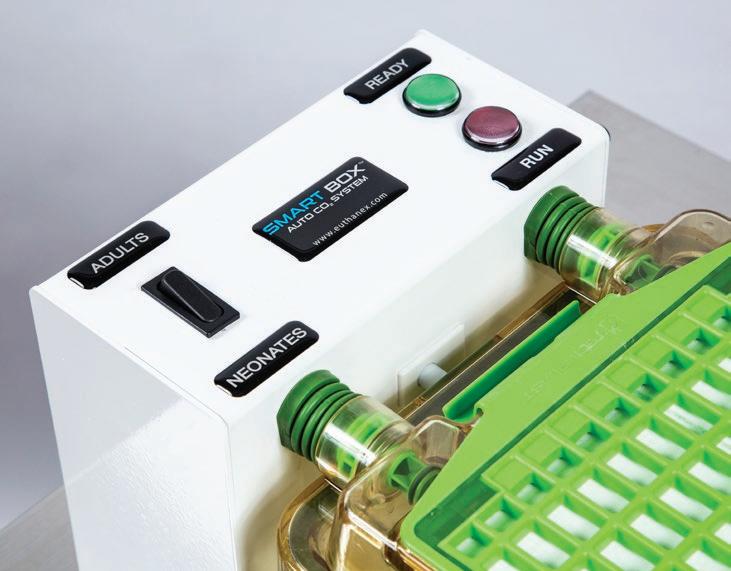



Getting Personal
What companion animals do you have? If you have none, then what kind of pet would you like to have?
I currently have no animals, but I used to have ferrets- Ferrari and Sin. If I could get any pet right now, I would get a pit bull puppy because BIG DOGS need love too!
Best binge-watching TV series?
Married to Medicine.
What are your favorite hobbies?
Traveling, singing/dancing, eating, and girls' night out are my favorite hobbies.
Where is your dream vacation spot?
Bora Bora.
What is your favorite dessert?
Candy Grapes (real fruit grapes wrapped in melted Jolly Ranchers) with crushed Nerds on top.
LAS PRO-files minutes with... Taylor N. King, LATG
Facility/Employer: University of North Carolina at Chapel Hill, Division of Comparative Medicine
Job Title: Research Operations Manager
How did you get in this field?
My grandfather was a PI (principal investigator) and my Pop Pop was a husbandry tech. Pop Pop recommended I try it out; I never thought I’d be able to work with rodents as I was scared of their size and speed! I was 21 when I started in cage wash with a H.S. diploma and no college education.
Who were your mentors?
Brandy Barnes and Mark Maskell. Brandy is a smart, hard working woman; having the physical representation of a BOSS who looks like me gave me the confidence that I could be a boss in the field one day too. They have both remained mentors throughout my entire lab animal career, I’m now managing the building that Mark managed me in and Brandy managed him in.
What are your current interests in animal science?
I’m currently interested in obtaining a CMAR certification and networking. As the LAS world continues to grow, I find it extremely gratifying to meet people, listen to and understand their stories, and to walk away having learned something and met someone new. It seems opportunities in the field are limitless when you get to know people from different branches, universities, and companies.
Where do you see yourself in 5 years?
In 5 years, I see myself being an integral part of new building/facility design and construction projects at UNC-CH. I’d also love to be leading a leadership training program, mentoring staff into higher roles, and prepping them to be successful in their career paths, whatever that may be. The most important thing I would like to accomplish in the next 5 years is a promotion to AOD (Assistant Operations Director); starting entry level in cage wash and moving to the top position under the Attending Veterinarian seems like the ultimate career trajectory.
What is your favorite part of your job?
I love the teaching and mentoring portion of my job. I love to see others gain skills, overcome obstacles, and be exposed to animals
or projects they may not have otherwise come across. Most importantly I like providing a better insight into the research/lab animal world, other than the stereotypes often displayed publicly.
What advice do you have for others just beginning their animal science career?
Opportunities are ENDLESS! Most universities and companies offer educational incentive programs, health benefits, training, paid vacations, etc. Even pandemics can’t stop research, which promotes job security. Working in lab animal medicine brings you closer to animals and allows you to be a part of world/ human improvement.
What is the most rewarding aspect of your career? The most rewarding part of my career is telling the story of my career path and inspiring others. It’s all about communication, networking, dedication, and not keeping all your eggs in one basket. I’ve unlocked skills and talents I never knew existed within me and that is satisfying in itself!
What is something unexpectedly interesting about your career?
The networking conferences are very interesting to attend. There is a plethora of information: posters, webinars, seminars, career fairs, wet labs, and dry labs. The people are even more interesting- you meet doctors, scientists, cage wash technicians, engineers, and people from all over the world.

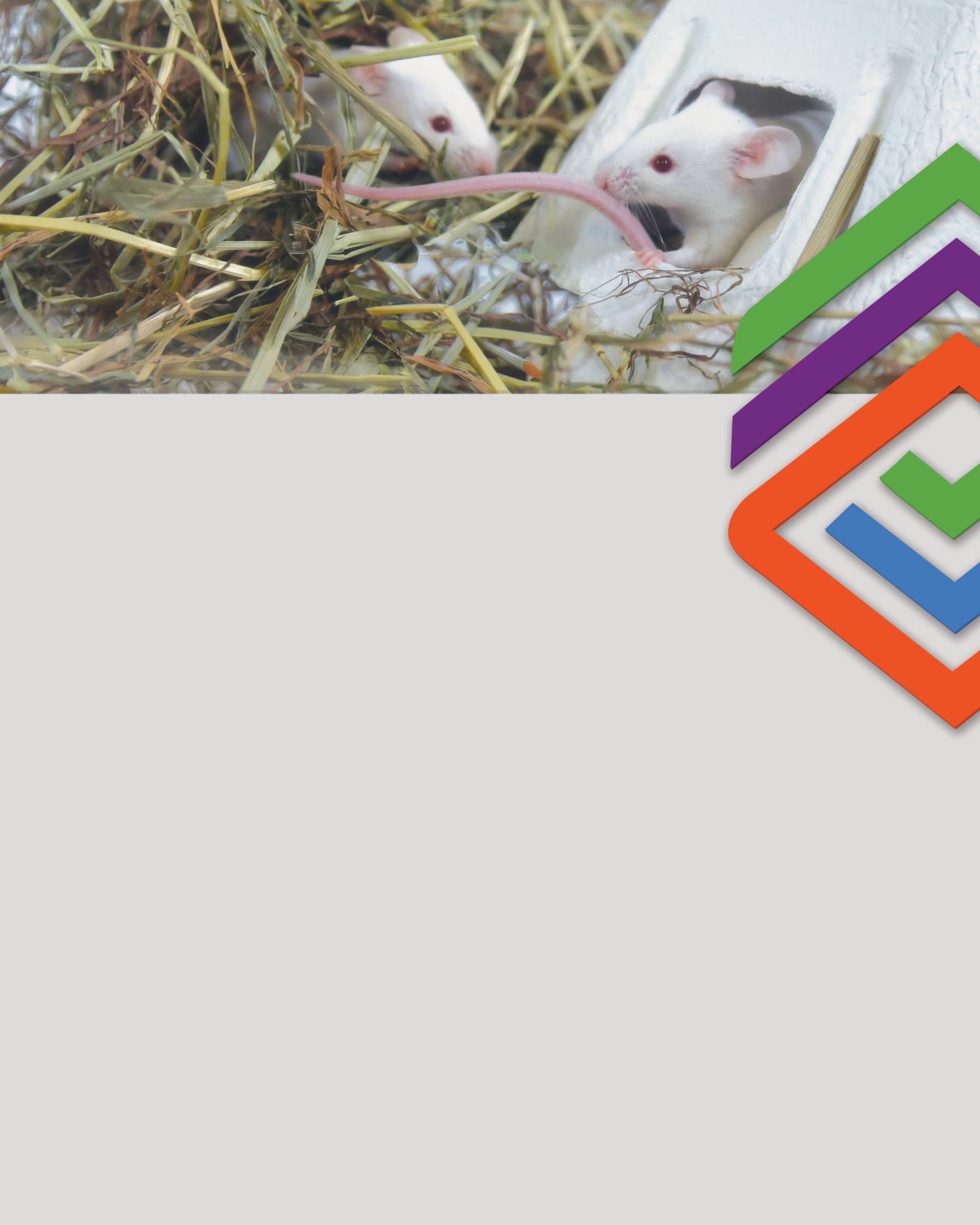
14 Laboratory Animal Science Professional March 2024
5

Having served the research community for more than 50 years, we are well known for creating products that meet the unique needs of research animals.
While we consider all our products to be an important part of animal care, some stand out as absolutely essential. We are proud that our products, both important and essential, are trusted by researchers around the globe!
NUTRITIONAL ENRICHMENT MEDICATEDSPECIAL NEEDS 800-996-9908 U.S. & CANADA | 908-284-2155 INTERNATIONAL www.bio-serv.com ISO 9001:2015 Certified Quality System It’s essential.
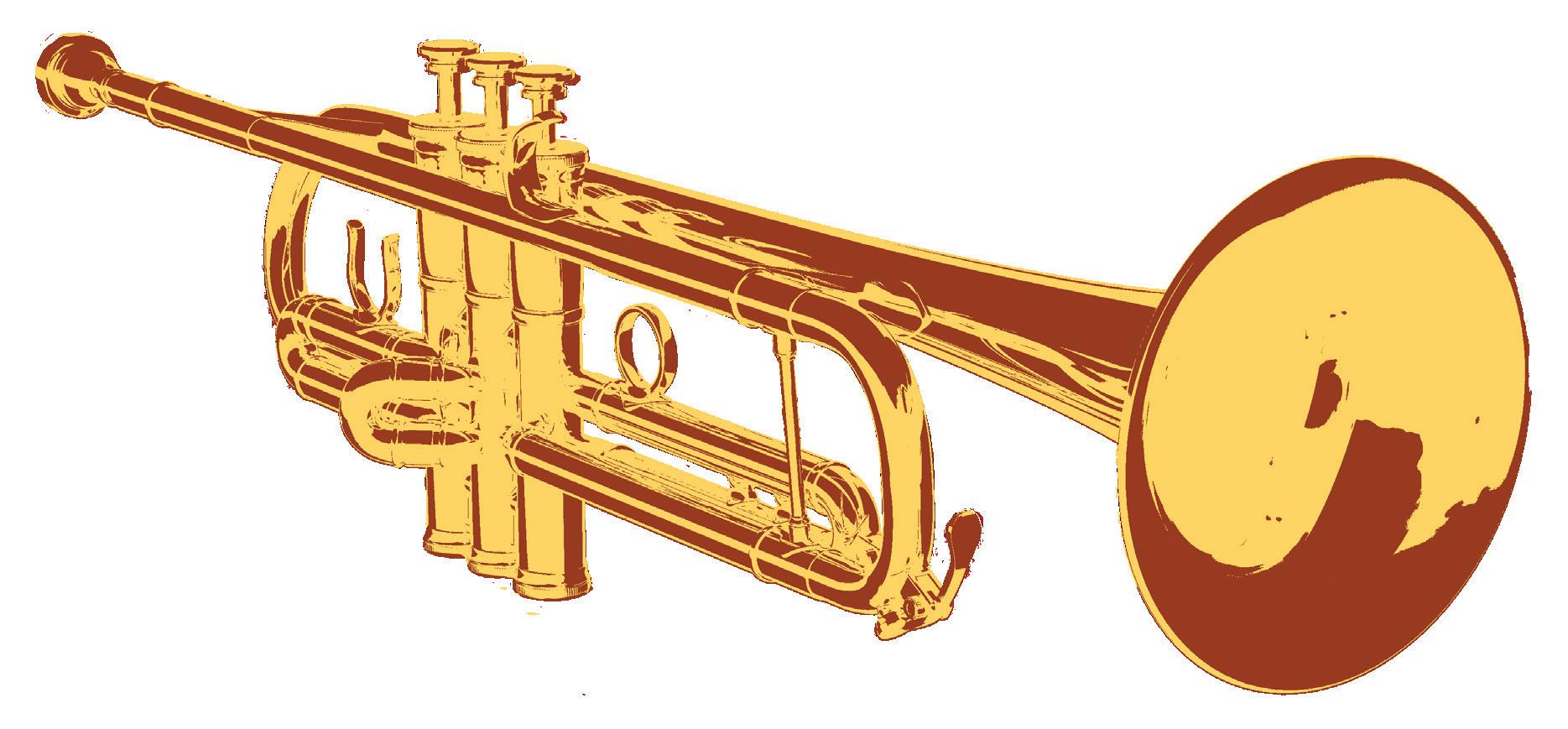






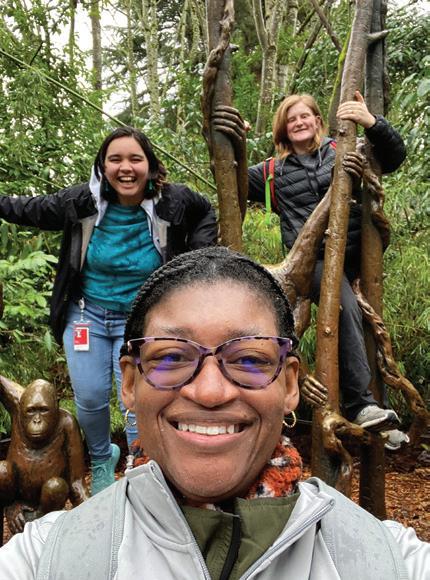
Tech Week at Bristol Myers Squibb

All our Bristol Myers Squibb (BMS) sites enjoyed different but equally amazing celebrations honoring our remarkable staff members.
On Monday and Tuesday, one west coast team enjoyed a collaborator sponsored breakfast and a meet and mingle. On Wednesday and Friday there was a lunch and learn, and also on Friday there was a brunch and after work happy hour. Each day, at another site, the team was provided with amazing treats to celebrate Tech Week, which included breakfast burritos, doughnuts, a pizza lunch, gift bags with personalized thank you cards, and going to a restaurant for lunch.
One of the east coast sites spread the fun out with a monthly celebration. Every day for a week the technicians were able to cool down with an ice cream treat. In addition, the team enjoyed breakfast sandwiches on Thursday and a lunch and learn on the Friday of Tech Week. For example, the technicians were treated to a culinary delight—breakfast cooked by the Leadership Team. During another week, they were treated to a Chick-fil-A lunch. The finale was an entertaining bingo game, with prizes and treats.


Another BMS site received fresh baked chocolate chip cookies and adorable rat-shaped enamel pins for all the personnel supporting the vivarium. While another site enjoyed an escape room where they put their skills to the test and were victorious. They also experienced a visit to the zoo and indulged in a tasty lunch. Finally, all sites enjoyed goody bags stuffed with treats such as energy drinks, candy, and a Starbucks gift card to name a few. Our culture of care team surprised the technicians with amazing towels and bags labeled “Culture of Care.”
Submitted by Jessica Hart Hunt
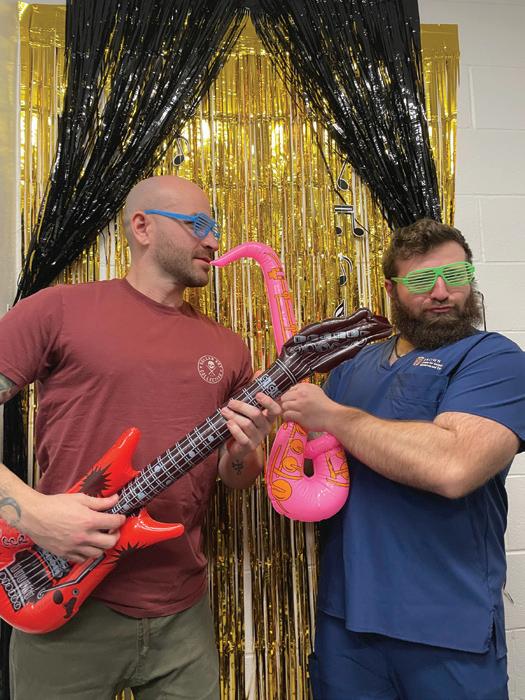


Brown University: Providence, RI
The staff at Brown University’s Center for Animal Resources and Education had an amazing time celebrating International Laboratory Animal Technician Week 2024. Our animal tech team is truly the soul of all that we do, so we packed as much as possible into the week to show them how much they are appreciated. Each day during the week we had a different activity and game that our staff could participate in. We also had swag bags that we gave out to all of our animal techs that included items donated by vendors, AALAS Tech Week stickers, and lots of snacks.
We started off celebrating on Monday morning with a hot catered breakfast for the team and played animal trivia. On Tuesday we had a pizza party that was donated to us by one of our wonderful vendors. Wednesday everyone brought in food for a potluck and we handed out fun CARE Superlatives. Thursday morning the admin team brought in griddles and cooked the team french toast and bacon. Friday we ended our celebration with a popcorn machine, candy, and a viewing of the movie “Soul” to tie in this year’s theme “Technicians are the Soul of Research”.
Submitted by Jillian Castañeda









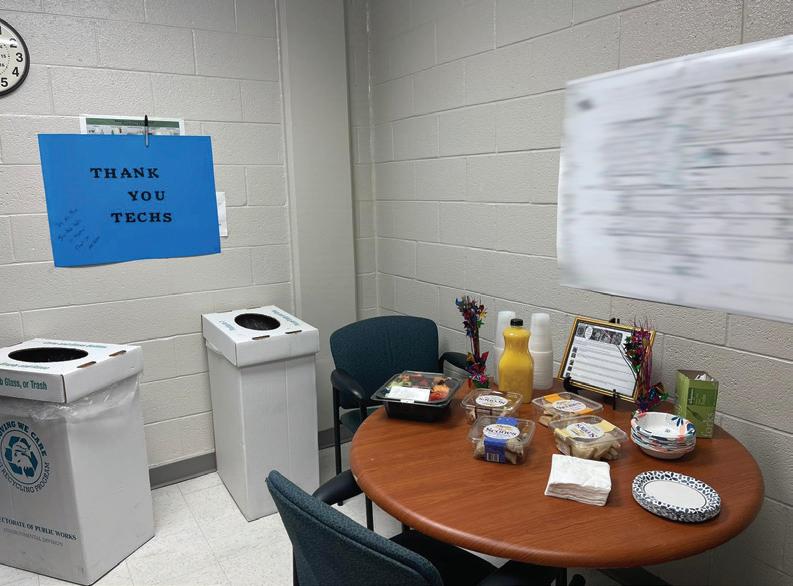
Defense Centers for Public Health - Aberdeen (DCPH-A)
Happy Tech Week!
We celebrated this morning with breakfast from our supervisor.
Submitted by Lindsey Ward





Incyte Research Institute: Wilmington, DE
A sincere thank you to our research colleagues for highlighting AALAS Tech Week year after year. It truly does show that you are deeply supported and appreciated. The little things such as signed cards and Tech Week T-shirts are up very lifting. I will wear my Tech Week shirt proudly!
Submitted by Brian Long




Mayo Clinic Arizona
It was an awesome 2024 International Laboratory Animal Technician Week at Mayo Clinic in Arizona.
Our appreciation board and thank you notes from our investigators to our animal care technicians had many wonderful comments:
• “We are so lucky to have such an amazing team! Thanks for taking such good care of our animals and making everything possible. Everything you do matters!”
• “DCM ACTs are amazing! Thanks for all you do!”
• “Thanks for all your help and support with the animals. I always appreciate it!”
• “Thank you, Thank you, and Thank you!

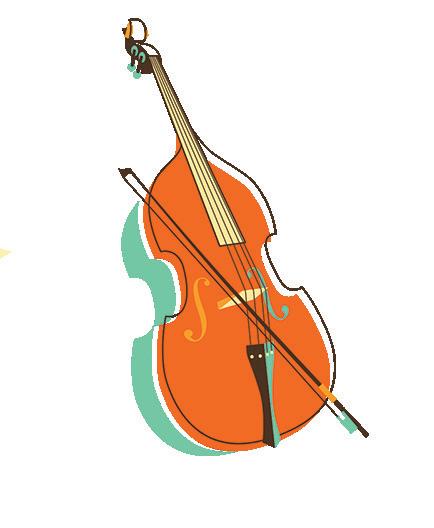

• “We are so fortunate to have you all in our research department! You are the soul and heart for taking such good care of our animals!”
• “Every one of you is needed for successful animal research!”
• “Thank you for your love and care of the animals. The animals save lives!
A bulletin board featured the theme for the week “Technicians Are the Soul of Research” and included photos of the DCM staff members. The week we started with breakfast from Senor Taco. Breaks during the week included fruit, meat, cheese, and veggie trays, ice cream, and fruit bars! We went to Chompie’s Restaurant for our big celebration lunch. Drawings were held for a variety of gift cards. Everyone was a winner, receiving a gift card and packet full of “swag” with items from AALAS and Americans for Medical Progress. We had a fried chicken lunch with all the fixings at the end of the week and then played “AALAS Jeopardy” with Team Mouse and Team Pig competing for cash gift cards. A survey was completed at the end of the week, to let us know which events the staff most enjoyed and to get suggestions for next year’s celebration!
Submitted by Naomi M. Gades
March 2024 Laboratory Animal Science Professional 17


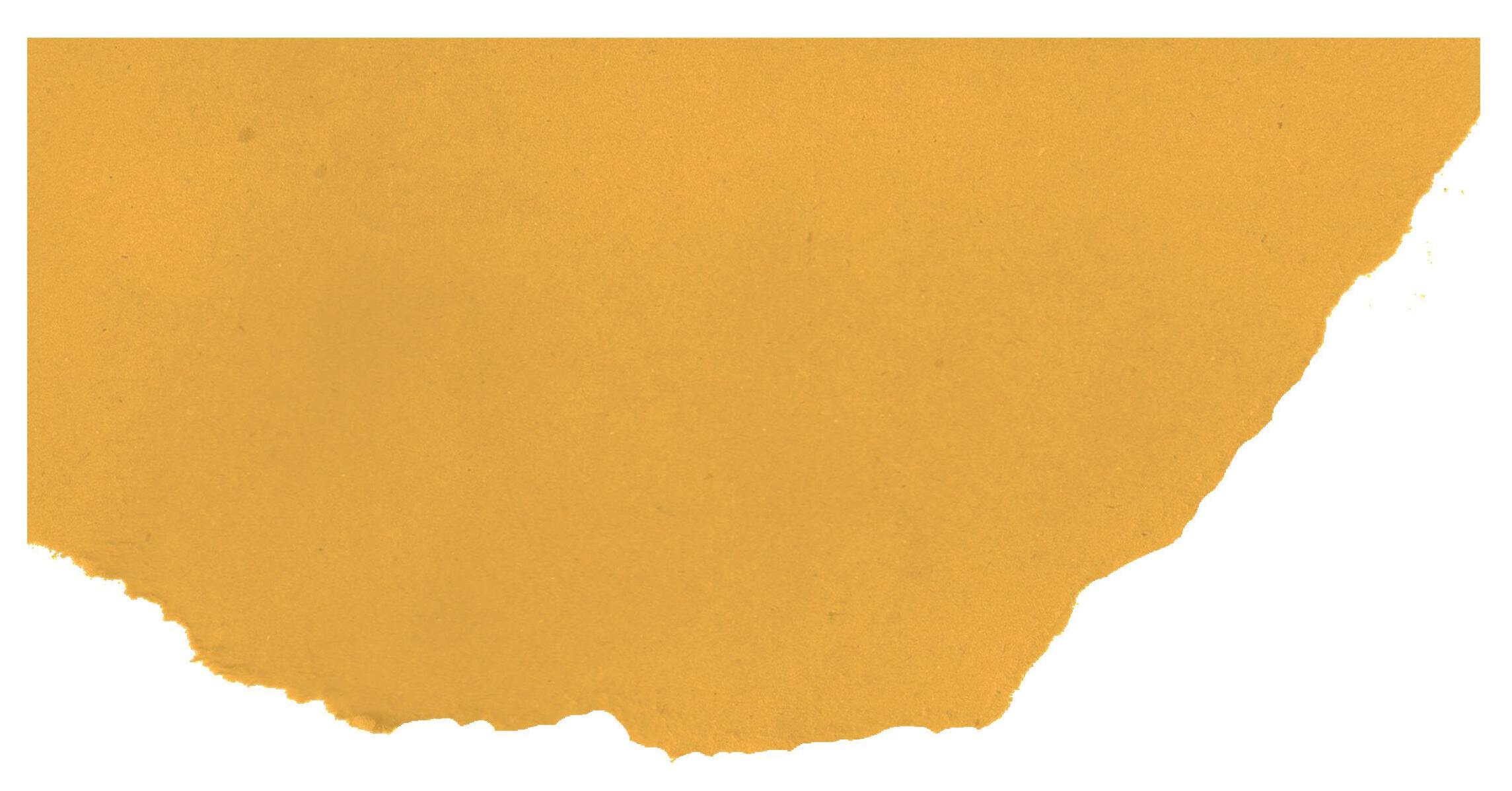


Missouri State University: Springfield, MO
Every day of Tech Week, I left my staff treat bags with snacks and fun Tech Week themed trinkets to let them know how much I appreciate them. On Friday, we had a staff meeting/pizza party, and I presented a PowerPoint slideshow highlighting what AALAS is all about and affirmations of gratitude from the researchers whose animals we take care of. A graduate student attended the meeting and presented the work she has been doing with mice. My staff really enjoyed learning about the research side of things. We ended the celebration with a fun photo shoot. Submitted by Angela Goerndt

Nationwide Children’s
We had a spectacular Tech Week this year and were overwhelmed with support and appreciation from our research peers!
Throughout the week we had an ABUNDANCE of food and snacks provided to us by over 13 different labs – everything from donuts, pastries, cookies, candy, snacks, etc! We provided a free lunch to all staff from a local taco food truck and employees were allowed to pick out their meals ahead of time. During this lunch we also catered a cake featuring a photograph of our Animal Heroes of the Year. Animal Heroes of the Year are nominated by our staff and others in research who have developed a special bond and really appreciate their help furthering research goals.


Spirit Dress Days for all staff to share their unique interests with everyone:
• Music Shirt Monday
• Favorite Sports Team Tuesday
• Wacky Socks Wednesday
• Favorite Animal Shirt Thursday
• Favorite Color Friday
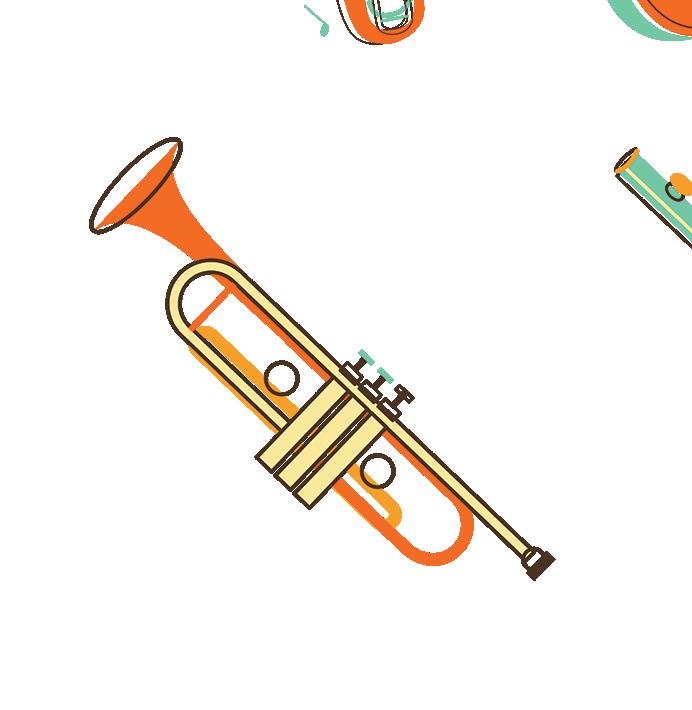
Management Breakfast Bar – our management staff cooked and served a HUGE breakfast buffet to all staff. We had eggs, waffles, breakfast burritos, sausage, pancakes,
Goodie bags – everyone received a goodie bag full of fun treats – healthy snacks, notebooks, badge reels, magnets, hand sanitizing wipes, and more!
We played movies during the middle of the day for 3 days out of the week for anyone to watch while they ate lunch or just needed a break! We tried to stick to musical based movies, or at least ones with lots of fun songs!
We shared over 130 staff pet photos through a name the pet game!
Lastly, through generous donations from our researchers, events committee staff, and management team we raffled off 69 raffle prizes that ranged from dinner & movie packs to notebooks, pens, and hair accessories to live plants in animal themed pots and more! There were 1-2 (or more) random winners announced every hour from 7-4 every day of
Submitted by Anna Pugerud











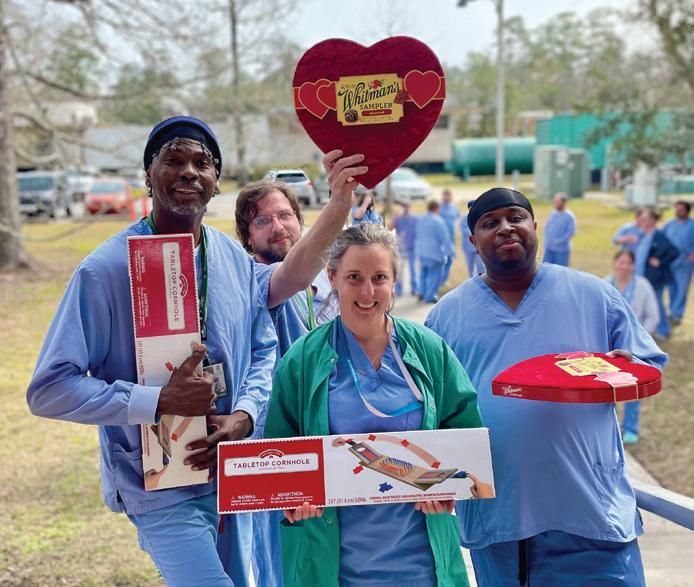


Tulane: New Orleans





Our talented TNPRC technicians were treated like royalty during Tech Week with loaded swag bags, fresh popcorn, extended lunches, candy “survival kits”, pizza, and king cake! We held a raffle for donations and awarded Best Of prizes at our epic nacho bar event. Thank you post-its from TNPRC employees were proudly displayed in our café to show our appreciation. But wait, there’s more! Our techs got to unleash their inner artist with a canvas painting for a community mural and embarked on a thrilling scavenger hunt around campus and virtually. And let’s not forget about the kickball game, flag football, bean bag toss, picnic, and even a Mardi Gras parade that kept the good times rolling.
With perfect weather and endless fun, our techs truly felt the love and appreciation. Here’s to our amazing team of technicians - you truly are the “soul of research!”
Submitted by Shannon Aicklen





March 2024








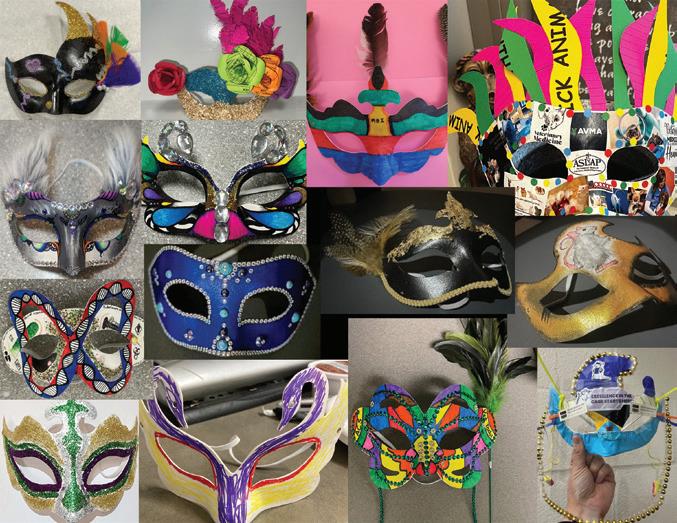
The University of North Carolina at Chapel Hill DCM staff brought the ‘soul’ in this year’s edition of Tech Week! With over 200 people in our division, we got our creative juices flowing and came up with all kinds of events for people to participate in, so that everyone felt appreciated for what they do. We had events ranging from daily trivia and scavenger hunt bingo that took place all week, to single-day events of a game day with hula hooping and a ‘Fear Factor Foods’ segment, soul food potluck, and a movie day where we got to see Disney’s Soul and enjoy a Chick-Fil-A lunch. With the GOATT trophy up for grabs for the 9th year in a row, we assigned point values to several events throughout the week, and asked people to form teams with 4-6 people. These teams competed to have the highest point total at the end of the week, earning them the right to keep the GOATT trophy until Tech Week in 2025! No team? No problem! Most events were open to anyone, even if they didn’t want to be eligible to win the trophy. Whether staff participated on a team to earn trophy points, or in one or two planned events, DCM had a little bit for everyone!
Submitted by Lena Perdue

University of Florida






Based on this year’s theme, we decided to embrace more of a Mardi Gras theme with our mask decorating contest. Each one of our areas received a mask to decorate based on how they felt it fit with the theme. We didn’t realize how talented our staff were until we received the photos of the masks.
Submitted by Heath Decker

University of Montana



I wanted to share some of the amazing Tech Week celebrations that we did to show our appreciation for the Lab Animal Techs. In addition to Tech Week, we had a lot to celebrate this week, our new Lab Animal Tech Sam Zwiesler (in picture - blue scrubs) completed her probationary period with us and another Lab Animal Tech, Jess Rowe (in picture - red scrubs) celebrated her 29th birthday!
We tried to organize a fun activity almost every day for Tech Week, taking into account our work schedules, meetings, and other duties.
Monday - Our IACUC Manager and Biosafety Officer, Linda Hicks, brought the LAR team some delicious pastries for breakfast!
Tuesday - LAR Themed Bingo on our lunch break
Wednesday - Catered lunch and Scavenger Hunt. Two of our P.I.’s bought lunch from a really good local BBQ restaurant for our team!
Thursday - Kelly Carrick, our Facilities Manager (in picture - white lab coat) surprised us all with goodie bags filled with AALAS goodies and chocolates!
Friday - Guess who, baby edition. We had our team submit baby photos and I made a board to post them on in our main hallway. Everyone had to write down their answers, some of our P.I.’s also submitted their guesses! (see picture)
We had a lot of fun celebrating all the hard work and dedication of our Lab Animal Technicians!
Submitted by Katie DeYott





University of Nebraska Medical Center (UNMC)
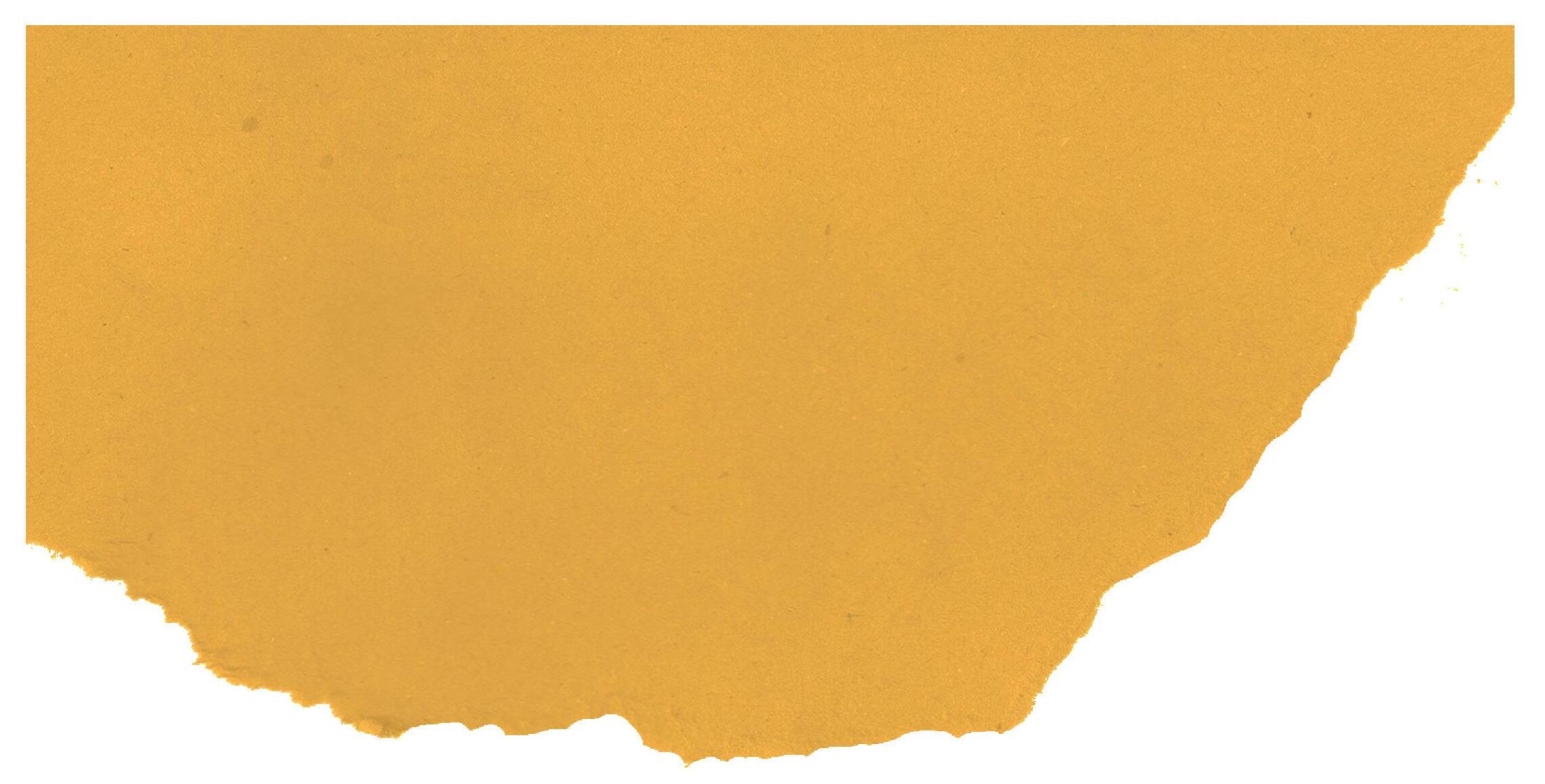



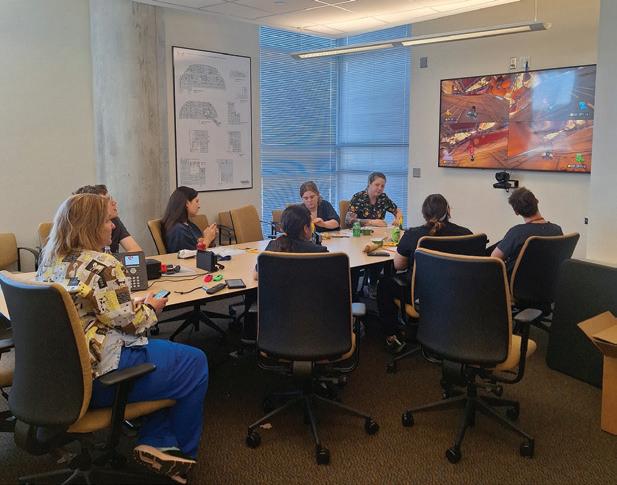
For Tech Week this year, our Social Advisory Committee, that is made up of staff from different areas in our department, came up with fun activities and themes for each day. One of the days we had a game day and brought in our Nintendo switches and played Mario Cart, had large group games, and coloring pages. Tech Week is a great way to appreciate and celebrate all the hard work our skilled yet caring technicians do.
Submitted by Mary Rodenbarger


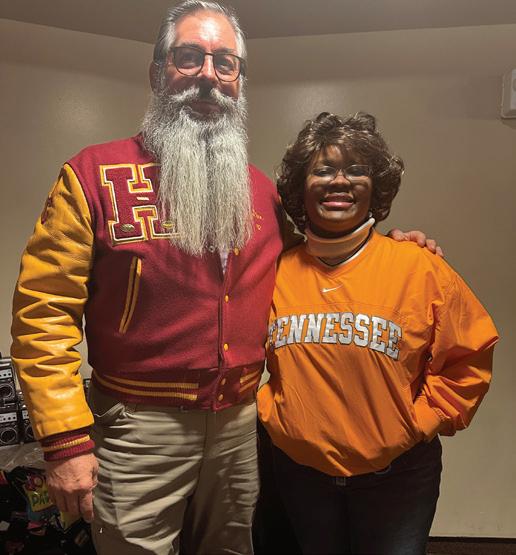




The University of Tennessee Health Science Center
Our department celebrates Tech Week as Tech Appreciation Month. The techs asked that we have activities one day a week for the month of February instead of all-in-one week. The pictures included are from the final day of celebration. We did an 80’s theme this year and a few of us dressed up in 80’s attire for a costume contest. The winner of the contest was LaRita Bugg, RALAT, and she is pictured with her costume match Stan Latocha, our Director of Operations. We also allowed our techs to have gaming time at the end of the celebration. Submitted by Leadra Williams
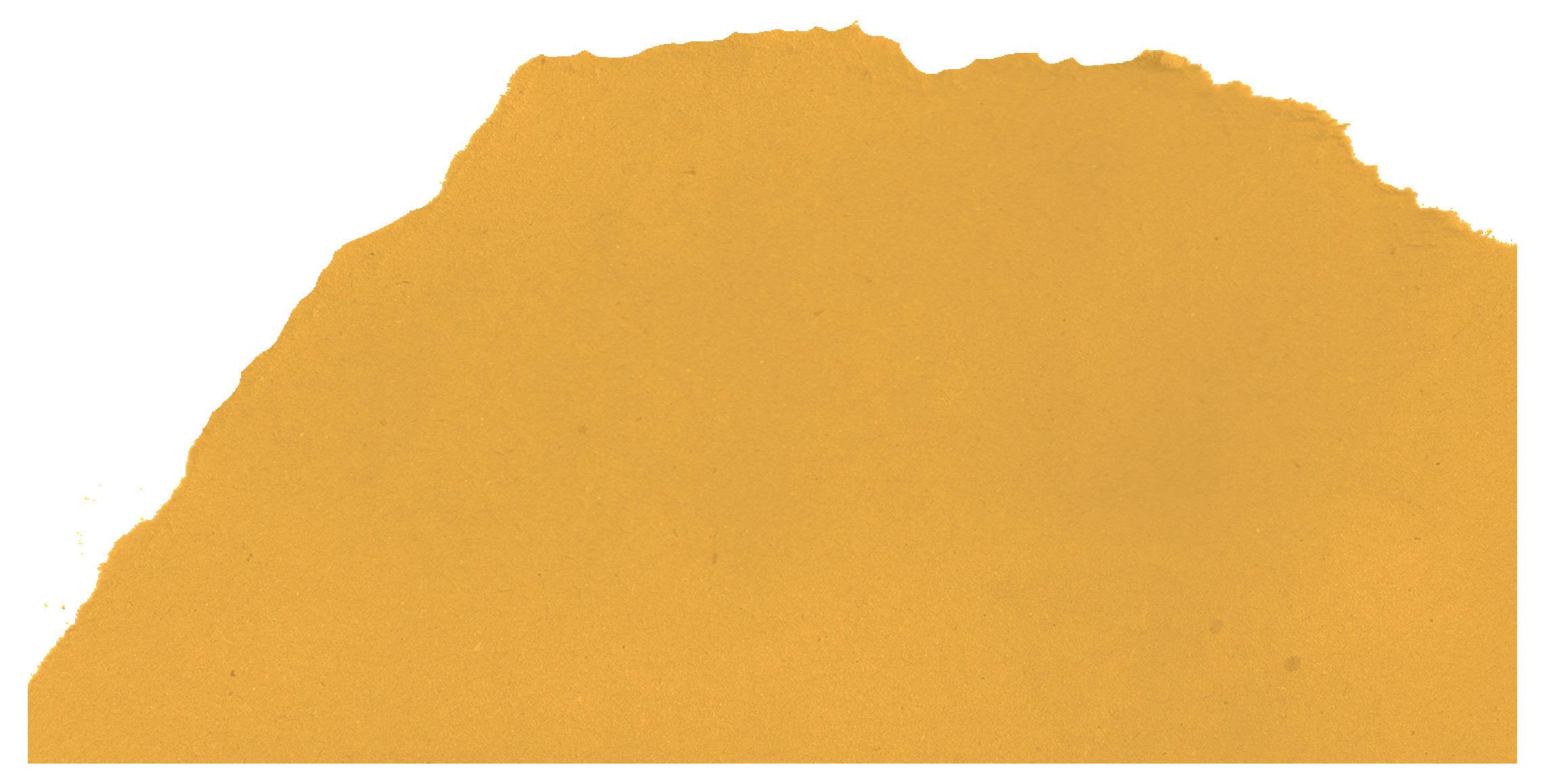


Virginia Tech
We had a great Tech Week! We had a daily prize basket winner that was drawn from a prize wheel generator. They could be anything from a “taco night” to “Movie night” basket, with everything in between. We had a sponsored breakfast on Tuesday and an sponsored lunch on Thursday which the staff loved. This year’s game was “American Idol Soul lyric edition” where staff could submit lyrics to a song that represented the “Soul” of research. Extra points were given to singing and props. The winning team would get the coveted Golden Hamster trophy and bragging rights for the year! They would also get a sponsored breakfast that was made by the veterinary staff and upper management! Every day we had some kind of fun activity from yoga at lunch to an ice cream social on Friday. We love our staff and try to show them how much!
Submitted by Mary Zabonik




March 2024 Laboratory Animal Science Professional 21
The Long and Short of It: Sexing Spiny Mice (Acomys spp.)
By Matthew D. Boulanger, VMD and Patrick A. Lester, DVM, MS, DACLAM
Introduction
Spiny mice (Acomys spp.) possess unique characteristics that make them interesting research models due to their regenerative capacities and menstruation - otherwise rare occurrences in rodents.1,2,5 Historically, varying tail lengths in wild Cairo spiny mice (Acomys cahirinus) have been observed and are potentially attributed to autotomy, or functional removal, allowing for use as an escape mechanism from predators.5,7 Studies have examined their skin, and although its composition mirrors that of Mus musculus, enlarged adnexa within the skin of Acomys set them apart; similar to a different “recipe” despite similar “ingredients.” In fact, the term “spiny mice” may have come from the appearance of large hairs. Moreover, compared to Mus musculus, it has been estimated that spiny mice skin demonstrates a 77-fold decrease in energy required for breakage, which may contribute to
Apossible predator escape mechanisms.6 This capability may have been a catalyst for their developed regenerative abilities.
Due to unique adaptive characteristics, specialized husbandry and handling techniques should be considered when working with spiny mice. Because they are predisposed to tail degloving and skin sloughing, it is often not advisable to scruff spiny mice or lift them by their tails.2 As such, the utility of visual exam procedures should be emphasized when working with this species. One cornerstone tool for working with laboratory animals is the ability to determine sex. In mice, this is often done by examining the anogenital distance (AGD), which ideally could be gauged visually, avoiding unnecessary manipulation of spiny mice. We hypothesized that AGD variations commonly observed in Mus musculus species would be similar in spiny mice.

BFigure 1. Comparison of male and female spiny mouse anogenital distance (AGD), either at: (A) weaning (left) or (B) as adults (right). The blue bars represent the mean of the male population, whereas the red represents the female and associated error bars are black.
(A) Comparison of male (n = 7) and female (n = 3) AGD of weanling (27-29 days of age) spiny mice as measured with calipers under anesthesia. These groups demonstrate statistically significant differences (p < 0.05) between male and female populations.
(B) Comparison of male (n = 18) and female (n = 14) anogenital distance of adult (>100 days of age) spiny mice as measured with calipers under anesthesia. These groups demonstrate statistically significant differences (p < 0.05) between male and female populations. This figure demonstrates a significant difference between sexes of spiny mice at key ages.
22 Laboratory Animal Science Professional March 2024 FEATURE – NOVEL SPECIES

Materials and Methods
The AGDs of 32 adult (>100 days of age, n = 14 female, n = 18 male) spiny mice were measured along the perineum using calipers while anesthetized. Additionally, AGD of 10 weanling spiny mice was measured weekly (24–72 days of age, 4 litters total, n = 7 male, n = 3 female). The definitive sex of the spiny mice was determined by either the presence of nipples or the ability to extrude a penis. Datasets were visualized for normality, and an unpaired t-test was used to quantify significance of data between male and female mice at 4 weeks and as adults (>100 days). Findings are reported as the mean + standard deviation with statistically significant differences designated at p < 0.05.
All animal procedures were approved by the University of Michigan Institutional Animal Care and Use Committee or under direction of clinical veterinary care and performed at the University of Michigan, an AAALAC-accredited institution. This study adhered to the principles stated in the Guide for the Care and Use of Laboratory Animals 4
Results
AGD was found to significantly differ (p < 0.05) between sexes in adult spiny mice, indicating sexual dimorphism in the adult population. The mean AGD of adult spiny mice was found to be 0.48 + 0.18 cm for females and 1.1 + 0.21 cm for males. This results in a male to female AGD ratio of about 2 (Figures 1A and 1B).
Similarly, AGD was found to significantly differ (p < 0.05) between sexes in spiny mice at weaning, which occurred at 27-29 days of age and indicates sexual dimorphism in the juvenile population. The mean AGD of juvenile spiny mice was found to be 0.2 + 0.1 cm for females and 0.64 + 0.18 cm for males. This results in a male to female AGD ratio of about 3 (Figure 2). The AGD was also measured weekly for juvenile spiny mice, and age-matched spiny mice demonstrated significantly different AGDs between sexes at all measured timepoints (Figure 3).
The weights of a cohort of spiny mice were also measured weekly, and the presence of secondary sex characteristics was noted. For spiny mice, this can include changes in the color of the fur, the presence of nipples, or the ability to extrude a penis. These were noted as early as 6-7 weeks post parturition.
The average weight of adult spiny mice was 50 + 9 g. There were no significant differences between agematched male and female populations, either in the juvenile (Figure 4) or adult populations.
Discussion and Conclusion
The presence of nipples has historically been suggested as the only reliable method of sexing spiny mice. However, this requires handling and due to skin fragility can be challenging depending on mouse age, parity, viewer experience, and season. As such, the AGD represents a reliable visual method for sexing spiny mice while avoid-
March 2024 Laboratory Animal Science Professional 23
Figure 2. Comparison sample images of the perineum of spiny mice. The perineum, as traced by the yellow line, was considered as the anogenital distance. A white scale bar (1 cm) can be seen at the top of either image: (A) male spiny mouse (left) and (B) female spiny mouse (right).
A B

Figure 3. Anogenital Distance (AGD) of longitudinally measured spiny mice from 4 to 8 weeks of age (n = 7 male, n = 3 female). The red and blue lines represent the mean female and male AGD, respectively. Standard deviation is represented by the vertical components in corresponding colors. This figure demonstrates a visual difference of AGD between sexes of spiny mice.

Figure 4. Comparison of weight between sexes of juvenile spiny mice over time. Red and blue lines represent female and male data, respectively, with vertical bars corresponding to standard deviation. This figure demonstrates that mice continue to grow after weaning; statistically significant sexual dimorphism is not observed in terms of weight.
24 Laboratory Animal Science Professional March 2024
ing unnecessary handling or anesthesia. As seen in Figure 2, AGD can be noted as the length of the perineum in both sexes and can serve as a visual cue for sexing. The mean AGD of male juveniles was significantly different from that of age-matched juvenile females, which could potentially allow immediate pairing into breeding pairs at weaning. Nipples on female juveniles were noted as early as two weeks after weaning, but more consistently by three, for a total of 6-7 weeks of age.
These findings suggest that similar to Mus musculus, AGD could be utilized as a visual cue for sexing spiny mice, reducing handling and allowing for early sex determination. Given their unique husbandry considerations, spiny mice are often supplied with tunnels as enrichment. Conditioning spiny mice to use tunnels may allow for ease of visualization through a semi-transparent tunnel.
Other sex-related characteristics, such as change in coat color, were observed significantly later than either nipple development or AGD. In Mus musculus, weight has been associated with dimorphism, with males being larger.8 There appears to be a small discrepancy in reports about sexual dimorphism of weight in Acomys. Differences were not observed in this particular cohort, like other reports,5 but others suggest males might be larger as seen in Mus musculus 2
In adult Mus musculus, AGD is twice as long in males versus females.3 As compared to Mus musculus, similar AGD ratios in both juvenile and adult populations of spiny mice were observed. While male and female spiny mice have statistically different AGDs at weaning, future studies could investigate if pre-weanling spiny mice do not demonstrate this difference. Based on our observations, AGD differences became more pronounced as male juvenile spiny mice AGD grows with age whereas the female AGD appears to maintain relatively consistent, which may relate to androgen production.1 As such,
pairing spiny mice based on AGD at weaning appears possible and has been instituted at our facility, as a minimally-invasive (visual) sexing cue.
Matthew D. Boulanger, VMD is a Postdoctoral Research Fellow at the University of Michigan in Ann Arbor, MI.
Patrick A. Lester, DVM, MS, DACLAM is a Clinical Professor at the University of Michigan in Ann Arbor, MI.
REFERENCES
1. Gaire J, Varholick JA, Rana S, Sunshine MD, Doré S, Barbazuk WB, Fuller DD, Maden M, Simmons CS. 2021. Spiny mouse (Acomys): an emerging research organism for regenerative medicine with applications beyond the skin. npj Regen Med 6:1. https:// doi.org/10.1038/s41536-020-00111-1
2. Haughton CL, Gawriluk TR, Seifert AW. 2016. The biology and husbandry of the African spiny mouse (Acomys cahirinus) and the research uses of a laboratory colony. J Am Assoc Lab Anim Sci. 55:9–17.
3. Hotchkiss AK, Vandenbergh JG. 2005. The anogenital distance index of mice (Mus musculus domesticus): an analysis. J Am Assoc Lab Anim Sci. 44:46–48.
4. National Research Council. 2011. Guide for the care and use of laboratory animals, 8th ed. Washington (DC): National Academies Press.
5. Pinheiro G, Prata DF, Araújo IM, Tiscornia G. 2018. The African spiny mouse (Acomys spp.) as an emerging model for development and regeneration. Lab Anim 52:565–576. https:// doi.org/10.1177/0023677218769921
6. Seifert AW, Kiama SG, Seifert MG, Goheen JR, Palmer TM, Maden M. 2012. Skin shedding and tissue regeneration in African spiny mice (Acomys). Nature 489:561–565.
7. Shargal E, Rath-Wolfson L, Kronfeld N, Dayan T. 1999. Ecological and histological aspects of tail loss in spiny mice (Rodentia: Muridae, Acomys) with a review of its occurrence in rodents. J Zool. 249:187–193. https://doi. org/10.1111/j.1469-7998.1999.tb00757.x
8. The Jackson Laboratory. Body weight information for C57BL/6J (000664). Available at: https://www.jax.org/jax-miceand-services/strain-data-sheet-pages/body-weight-chart-000664
March 2024 Laboratory Animal Science Professional 25

Empowering Excellence: The Role of Autonomy in Motivating Laboratory Animal Science Professionals
By Sarah E. Jones, MLAS, CMAR
In the dynamic and challenging field of laboratory animal science, technicians play a pivotal role in ensuring the welfare of laboratory animals and advancing research. With the evolution of management strategies, there is a growing recognition of the motivational benefits associated with granting autonomy to these dedicated individuals.4 As management paradigms continue to evolve, understanding motivational theories and their application to workplace autonomy becomes increasingly crucial. This article delves into the intersection of these theories and research on workplace autonomy within the context of laboratory animal science, shedding light on how these theoretical frameworks can shape organizational strategies, promote animal welfare, stimulate innovation, and elevate research outcomes.
Motivational Theories and Autonomy
Self-Determination Theory or SDT is a prominent psychological theory that emphasizes the role of autonomy in
motivation.1 According to SDT, individuals have three basic psychological needs: autonomy, competence, and relatedness. Autonomy is considered a critical factor in fostering intrinsic motivation, which refers to engaging in an activity for its inherent satisfaction rather than for external rewards. Deci and Ryan, the founders of SDT, argue that when individuals feel autonomous, they are more likely to be motivated and experience greater well-being.1 Research has consistently shown that autonomy-supportive environments enhance employee engagement, job satisfaction, and performance across various industries.
Other scientific research also supports the idea that employees are generally more motivated when they have autonomy in their workplace. Numerous studies in organizational psychology and management have explored the relationship between autonomy and motivation. Hackman and Oldham identified autonomy as one of the core job characteristics that impact motivation.2 They suggest that jobs with higher levels
26 Laboratory Animal Science Professional March 2024
GENERAL INTEREST
of autonomy, along with other factors like skill variety and task significance, lead to increased job satisfaction and motivation. Autonomy is associated with a sense of responsibility, variety, and personal control over one’s work.
Various empirical studies have explored the relationship between workplace autonomy and motivation. For instance, a meta-analysis published in the Journal of Applied Psychology found a positive association between autonomy and job satisfaction.3 Another study in the Academy of Management Proceedings showed that autonomy is linked to higher levels of employee engagement.4
Autonomy has also been linked to innovation and creativity in the workplace. When employees have the freedom to explore and experiment, they are more likely to generate innovative ideas. Research in the Global Business Review found that autonomy positively influences creativity and problem-solving.5
While the evidence is robust, it’s essential to note that the relationship between autonomy and motivation can be influenced by various factors, including individual differences and the specific context of the work environment.2 In general, providing employees with a degree of autonomy aligns with motivational theories and has practical implications for creating a positive and engaging workplace.
Understanding Engagement Components
Engagement among laboratory animal science professionals encompasses affective (emotional), cognitive (mental), and behavioral dimensions. This means that simply focusing on one aspect, such as job satisfaction, may not capture the full extent of engagement. Organizations should aim to foster positive emotions, a sense of purpose and meaning in work, and proactive behaviors among their employees.
Granting autonomy to laboratory animal science professionals holds immense potential for nurturing a culture of innovation and excellence. By empowering individuals to exercise autonomy in their work, organizations can tap into their intrinsic motivation, creativity, and problem-solving skills.
Furthermore, autonomy in laboratory animal science settings aligns with ethical principles and regulatory standards, as it enables professionals to make informed decisions that prioritize animal welfare while advancing research objectives. However, it’s essential to recognize that autonomy alone is not sufficient to drive optimal outcomes. It must be complemented by a supportive organizational culture that emphasizes competence and relatedness. Providing opportunities for continuous learning, skill development, and fostering collaborative relationships among team members are integral aspects of creating an autonomy-supportive environment in laboratory animal science settings. By aligning organizational practices with the principles of the motivational theories, organizations can cultivate a holistic approach to workplace autonomy that maximizes employee engagement, satisfaction, and ultimately, research excellence.
Building a Culture of Trust
Autonomy is built on a foundation of trust between management and laboratory animal science professionals, where mutual respect and confidence form the cornerstone of productive collaboration. When professionals feel entrusted with the autonomy to make decisions that are not only aligned with the organization’s goals but also uphold its ethical standards, it fosters a positive work environment characterized by transparency and open communication. This trust cultivates a profound sense of responsibility and accountability among professionals, instilling in them the conviction that their contributions are valued and integral to the success of the research program. Consequently, a culture of mutual trust and empowerment emerges, where every individual is deeply committed to advancing scientific inquiry and driving innovation forward.
Job Satisfaction and Intrinsic Motivation
Autonomy is closely linked to job satisfaction and intrinsic motivation. When laboratory animal professionals have the freedom to make decisions about their work, it enhances their sense of ownership and accomplishment.1 This sense of control over one’s work contributes significantly to job satisfaction, making professionals more engaged, motivated, and committed to achieving excellence in their roles.
Encouraging intrinsic motivation among laboratory animal professionals can lead to higher job satisfaction and productivity. This involves aligning their tasks and responsibilities with their personal interests, values, and career goals. Providing opportunities for meaningful work can ignite their passion and commitment to their roles.
Practical Examples on How to Provide Autonomy
• Conduct surveys to gauge employees’ emotional connection to work, perception of their contributions’ significance, and willingness to go beyond their roles.
• Offer flexibility in organizing work schedules, such as flexible hours or remote work options when feasible, empowering them to balance work responsibilities with personal commitments, enhancing job satisfaction and work-life balance.
• Allow technicians to propose and implement improvements to existing protocols or experimental designs based on their expertise, fostering creativity and experimentation within ethical boundaries.
• Encourage continuous learning and growth and provide professionals with the opportunity to take ownership of their professional development. This not only benefits the professionals themselves but also contributes to the overall progress of laboratory animal science as a field.
• Offer ongoing training and workshops on new techniques, equipment, or regulatory updates relevant to laboratory animal science, boosting confidence and competence and contributing to enhanced team performance.
March 2024 Laboratory Animal Science Professional 27
• Provide access to online courses or certifications related to animal welfare, laboratory animal science, or research ethics.
• Organize regular team meetings or brainstorming sessions where employees can share experiences, challenges, and ideas, strengthening relationships and promoting collaboration, fostering a culture of trust.
• Implement an employee recognition program where outstanding contributions are acknowledged and rewarded publicly. This could involve establishing an “Employee of the Month” program, presenting awards, certificates, or monetary bonuses to individuals or teams that have made significant achievements or demonstrated exemplary performance. Such recognition reinforces their sense of value and appreciation within the organization.
• Allow employees to choose their work and activities based on their individual strengths and interests.
• Implement a buddy system where experienced employees mentor new hires, fostering a sense of camaraderie and support.
Conclusion
In conclusion, integrating motivational theories and research on workplace autonomy into organizational strategies is paramount for unlocking the full potential of laboratory animal science professionals. By embracing autonomy as a cornerstone of organizational culture and incorporating these principles
into management and organizational practices within laboratory animal science settings, employers can create a more supportive and fulfilling work environment, ultimately enhancing the well-being and performance of their staff. Implementing these real-world examples can effectively enhance employee engagement, leading to improved job satisfaction, increased animal welfare, productivity, and ultimately, the quality of research outcomes.
Sarah E. Jones, MLAS, CMAR is a Scientist in San Diego, CA.
REFERENCES
1. Deci EL, Ryan RM. 2000. The “what” and “why” of goal pursuits: Human needs and the self-determination of behavior. Psychological Inquiry 11:227-268.
2. Hackman JR, Oldham GR. 1976. Motivation through the design of work: Test of a theory. Organizational Behavior and Human Performance 16:250-279.
3. Humphrey SE, Nahrgang JD, Morgeson FP. 2007. Integrating motivational, social, and contextual work design features: A meta-analytic summary and theoretical extension of the work design literature. Journal of Applied Psychology 92:1332-1356.
4. Muecke S, Linderman-Hill K, Greenwald J. 2020. Linking Job Autonomy to Work Engagement: The Mediating Role of Challenge Demands. Academy of Management Proceedings.
5. Sia SK, Appu AV. 2015. Work Autonomy and Workplace Creativity: Moderating Role of Task Complexity. Global Business Review 16:772-784.

28 Laboratory Animal Science Professional March 2024

Keeping your facility clean can be as easy as
1 2 3

The first step on TechTrak removes the larger particles stuck to the bottom of shoes. The second step removes smaller particles and whatever was missed on the first step. The third step removes any remaining particles, trapping all debris to the mat until cleaned.
Better Products. Better Science. 516.781.0755 ancare.com
INSIDE the IACUC
Readers of the “Inside the IACUC” column know that starting in 2020 and continuing for a couple of years, we published several articles about IACUC operations in the face of institutional COVID-19 precautions including physical distancing requirements and campus/facility closures. IACUCs faced several challenges due to the inability to physically gather committee members to carry out mandated activities such as semi-annual animal facility inspections. In response to the challenges, coupled with quickly revised guidance from multiple federal agencies, IACUCs adapted, changed, streamlined, and improved processes to continue to provide effective oversight.
We are now more than 4 years past the declaration of the pandemic, but many IACUCs are finding that a number of changes implemented during the height of the pandemic still benefit their overall operations and mission. Specifically, leveraging technology to continue the use of virtual post-approval monitoring (PAM) visits remains a popular tool for IACUCs for a variety of reasons. Dr. Jarvie’s article in this installment of “Inside the IACUC” takes a deep dive into those reasons and provides a balanced view of how IACUCs can successfully integrate virtual processes into their operations.
When reading Dr. Jarvie’s piece, you will notice that she cites data obtained from a survey of more than 150 IACUCs and animal care programs conducted in April 2022, approximately two years after the declaration of the pandemic, and published in the Journal of the American Association of Laboratory Animal Science last year. That manuscript, co-authored by “Inside the IACUC” column co-editor Dr. Stacy Pritt, is available at https://doi.org/10.30802/AALAS-JAALAS-23-000052


Stacy Pritt, DVM, MS, MBA, CPIA, CHRC, DACAW is the Associate Vice Chancellor and Chief Research Compliance Officer at The Texas A&M University System.
F. Claire Hankenson, DVM, MS, DACLAM, is the Associate Vice Provost for Research and Attending Veterinarian and Executive Director, University Laboratory Animal Resources, at the University of Penn sylvania in Philadelphia, PA.
Beyond the Pandemic: Examining the Ongoing Use of Virtual Platforms as Part of Post-Approval Monitoring
By Brenna Jarvie, DVM, BSc, CPIA
The COVID-19 pandemic introduced many significant challenges, including the loss of face-to-face interaction with animal researchers. During this period of change, a transition to virtual platforms was made to continue compliance assessments through the incorporation of mixed methodologies, including virtual meetings, to support the Institutional Animal Care and Use Committee’s (IACUC’s) mission to oversee animal activities.
What are virtual platforms?
Applications (apps) that allow the meeting of participants (visually and audibly) who are usually not together in the same room. Virtual meeting apps often allow screen-sharing for joint visualization of documents and presentation materials.
What is PAM?
One of the IACUC’s core tools in the effort to fulfill the regulatory obligation to oversee animal activities after approval,5,6 is referred to as post-approval monitoring (PAM).9 PAM is largely information-gathering, after protocol approval, to confirm adherence to approved animal activities, regulations, and local institutional expectations. Meeting these expectations does not require any one particular approach and can be conducted by the IACUC, veterinary, animal care, or compliance staff.5
The IACUC defines and manages the PAM program, including the types of PAM used. Protocol or administrative
review (discussing how approved activities are being conducted) is often directly compared to Procedure Observation.1,2,8 Most institutions consider the observation of procedures to be critical to assessing compliance.3
A survey conducted approximately 2 years after the start of the COVID-19 pandemic documented the biggest shift in PAM programs as an increased use of PAM methods relying less exclusively on in-person or virtual modalities and more on a combination of compliance efforts.7
Why are virtual platforms still being used for PAM ~4 years after the onset of the COVID-19 pandemic?
The ongoing use of virtual meetings is likely due to the increased attendance, ease of scheduling, and minimization of time lost in transit to physical meeting locations. While virtual platforms were introduced initially to overcome social distancing mandates, similar challenges continue to exist as staff (including, compliance and research) find themselves working remotely, traveling, or simply limited in time due to excessive commitments. Attempting to schedule in-person meetings can be met with resistance due to perceived inconvenience and may not be accommodated in a timely fashion. Virtual meetings are valued by participants who appreciate the screen-sharing of pertinent materials that allows more time-effective education and outreach. When locally surveyed, IACUC members felt that the
30 Laboratory Animal Science Professional March 2024
choice of virtual versus an in-person format for PAM was largely institution-specific and should include the preferences of the meeting participants.
Tips for the Successful Conduct of Virtual PAM
It has been noted that effective PAM is performed in a non-threatening manner.2 The use of technology to view animal procedures may feel less obtrusive than an onsite audit. Monitoring staff should ask questions before/after the procedure, mute themselves and turn off videos during the animal activity to avoid distraction, and allow for the focus of the research and animal program participants on demonstrating their subject matter expertise.
For observation of procedures using virtual means, it is best to choose procedures of short duration (such as euthanasia), with a second set of hands to hold and direct the device, in an IACUC-approved space with adequate internet or Wi-Fi connectivity (Figures 1 and 2). Because observational PAM is limited by access to adequate connectivity, monitoring staff must be aware of research participants moving animal activities into unapproved areas for better service without realizing the potential (safety and noncompliance) issues that may ensue. The success of procedure observation through virtual means is also very dependent on the ability to set up the camera with an appropriate view, which is best accomplished with a second set of hands to hold the device, especially where asepsis is required. The requirements for protocol or administrative review by virtual means are more straightforward as depicted in Figure 1.

Figure 1. A Comparison of the Requirements for Successful Protocol or Administrative Review Compared to Procedure Observation when Utilizing a Virtual Format. Schematic illustrating the components needed to use virtual meeting applications to conduct protocol or administrative review as opposed to procedure observation. Image generated using BioRender.com
The use of a virtual platform to view procedures may provide an opportunity for IACUC oversight of wildlife studies or remote facilities that have never been (or are less likely to be) observed on-site directly by the IACUC or Attending Veterinarian. An active camera feed can offer greater detail
than available through photographs. At distant locations, a live feed is not always possible, and a recorded procedure may be considered. The author recommends discernment concerning procedures recorded, as well as immediate erasure of the video(s) upon review.
The choice to use recordings or directly observe specific procedures virtually or in-person is best determined by the IACUC, ideally based upon risk assessment.3 Customization of PAM allows an institution to flexibly balance oversight needs with regulatory requirements.3 Figure 2 provides the reader with considerations to aid in choices of PAM format.
The pandemic forced researchers and compliance staff to use virtual meeting platforms enabling the opportunity to consider the animal activities that are best suited for this method. These may include procedures of short duration, when access is limited due to lack of resources, such as PPE, or lack of access, such as distanced locations or areas with (bio)hazards. Additionally, the presence of additional people may alter research findings (e.g., certain behavior tests) factoring into the decision-making process.

Figure 2. Future Considerations for Procedure Observations. A schematic outlining procedures or conditions that guide choice of procedure observation format. Image generated using BioRender.com
Conclusion:
Virtual meeting platforms offer continued value moving forward to provide a greater mix of methods to gather information to assure compliance while incurring minimal inconvenience. PAM broadens the opportunity for protocol refinement, supports scientific goals, and improves collaboration between the IACUC and the researchers.1,3,4,9 In the absence of PAM, there can be a negative impact on program continuity and loss of a mechanism for assessing the quality of the animal care and use program.4
Mixed methods of PAM, including virtual platforms, will continue to be a means of serving and providing oversight of
March 2024 Laboratory Animal Science Professional 31
the research community utilizing animals in research, teaching, and testing.
Brenna Jarvie, DVM, BSc, CPIA is the Post Approval Manager in the Animal Welfare Office at Texas A&M University
REFERENCES
1. Banks RE, Norton JN. 2008. A sample postapproval monitoring program in academia. ILAR J 49:402–418. https://doi. org/10.1093/ilar.49.4.402
2. Dale WE. 2008. Postapproval monitoring and the role of the compliance office. ILAR J 49:393–401. https://doi. org/10.1093/ilar.49.4.393
3. Davis JN, Greer W, Banks RE, Philips BH, Marx JO. 2019. Postapproval monitoring practices at biomedical research facilities. J Am Assoc Lab Anim Sci 58:469–474. https://doi. org/10.30802/AALAS-JAALAS-18-000132
4. Lowman RP. 2008. The institutional official and postapproval monitoring: the view from 10,000 feet. ILAR J 49:379–387. https://doi.org/10.1093/ilar.49.4.379
5. National Research Council (US) Committee for the Update of the Guide for the Care and Use of Laboratory Animals. 2011. Guide for the care and use of laboratory animals. 8th ed. Washington (DC): National Academies Press (US).
6. Office of Laboratory Animal Welfare. [Internet]. 2015. Public health service policy on humane care and use of laboratory animals. [Cited 18 July 2022]. Available at: https://olaw.nih. gov/policies-laws/phs-policy.htm.
7. Pritt SL, Hart MW, Perret-Gentil M. 2023. Trends among institutional animal care and use committees and animal resource programs for providing oversight and animal care during the (COVID)-19 pandemic and beyond. J An Assoc for Lab Anim Sci 62:336–348. https://doi.org/10.30802/AALAS-JAALAS-23-000052
8. Pritt SL, Smith TM. 2020. Institutional animal care and use committee postapproval monitoring programs: a proposed comprehensive classification scheme. J Am Assoc Lab Anim Sci 59:127–131. https://doi.org/10.30802/AALAS-JAALAS-19-000096
9. Vanderford DA, Doss S, Banks RE. 2015. A retrospective review of postapproval monitoring at a large academic institution. Lab Anim (NY) 44:395–401. https://doi.org/10.1038/ laban.856


For more than 30 years
Our priority has been to ensure our clients accessibility to the highest level of expertise and customer service in the industry. We are dedicated to providing you non-biased high-quality results with fast turnaround times with unmatched customer service.

a complete range of products and services, request our catalog or view it online at www.vrl.net

32 Laboratory Animal Science Professional March 2024
For
ANIMAL HEALTH DIAGNOS TICS Animal Health Monitoring • Virology • Chemistry • Bacteriology • Aquatics • Parasitology • Environmental Testing Visit our new improved website for your testing needs www.vrl.net
VRL
Reliable Results • Fast Turnaround Times Knowledgeable Scientific Staff Customer Focused Independent Laboratory Client & Technical Service Diagnostic Testing Fast Turnaround Times Quality Diagnostics
THE
ADVANTAGE

Animal Feeding and Intubation needles for every application
Braintree Scientific offers a wide variety of feeding and intubation needles designed to meet the special needs of scientists and researchers working with laboratory animals.
Non-Flexible Reusable Stainless Steel
Available in a wide variety of straight and curved animal feeding needles
12 gauge to 24 gauge stainless tubing and from 1" to 4" in length
Precision assembly of stainless steel balls and type 304 stainless steel tubing ensures a quality needle suited for feeding and dosing without injury to sensitive tissues
Fixed shape from stainless steel tubing
Stainless steel balls
Can be cleaned and re-used as needed
Packaged 4 needles per pack, non-sterile
Scan to learn more about Intubation, Feeding and Dosing
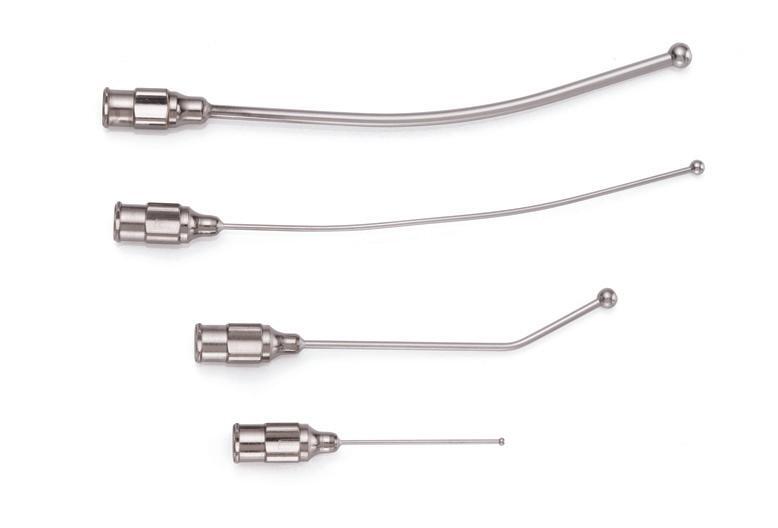

Sterile Single-Use
Malleable Stainless Steel

Flexible Plastic (PTFE)
Flexible Plastic (PTFE) with stainless steel bite protectors
Available in malleable stainless steel and flexible plastic
Manufactured with high standards and the convenience of a disposable sterile product for outstanding value
Plastic luer hubs and soft silicone tips
Non-toxic and non-pyrogenic
Packaged 5 needles per sterile pouch, 20 pouches per box
your Braintree Scientific catalog today!
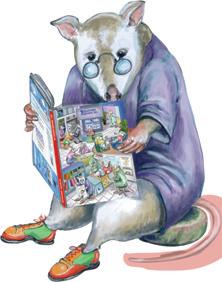
LAB RESEARCH PRODUCTS 781.917.9526 | info@braintreesci.com | braintreesci.com
Request
Developing Quality Workforce Training: Active Practice
By Kelly LaRue Brackett, Ph.D.
For centuries, the lecture has been one of the dominant methods of knowledge dissemination in academia. However, with increased access to knowledge and more people pursuing education than ever before, the lecture format has come under scrutiny. The lecture is hardly dead, but it could use some improvements.
Passive Versus Active Learning
The best lecturers are entertaining as well as demonstrate their expertise. They have captivating voices, excel in storytelling, have animated body movements, engage with their audience, and demonstrate passion in their topic. If you look at the sea of trainees while this kind of lecture is happening, they are sitting quietly and at most, they are taking notes. Whether delivered online or in person, lecturing is an active process for the instructor and is a passive activity for the trainees. Poh et al. measured the electrodermal activity (EDA) of a single college student for seven days (Figure 1).7 The student had high and variable EDA signals during labs (lime), socializing (green), studying (maroon) and even sleeping (light blue), but would flat line during class (yellow). The EDA signals during class time were essentially equivalent to relaxation (dark blue) and watching TV (purple). This publication was intended to be a proof of principle for the technicalities of EDA measurement sites and electrode materials but made waves in the educational community when renowned physics educator Eric Mazur used this figure in a presentation to satirically demonstrate lack of brain activity during lecture sessions.
Even though Poh et al. was not a robust educational study, this singular seemingly brain-dead student popularized the idea of active learning.7 There is now a body of pedagogical evidence in a variety of fields that all point toward active learning increasing student engagement and performance, with Freeman et al. being the definitive publication in STEM learning.4 In the development of our laboratory animal husbandry staff, not only do we wish to impart knowledge and justification around the work they do, but we wish to empower them to make real-time decisions while they are working. To build this confidence in their own abilities, the trainees should be the ones doing something during learning sessions, while the instructor facilitates the activity.2 You can assess your own instructional sessions by using COPUS,9 a tool designed to characterize the amount of time spent on passive and active learning. It may surprise you how little active learning is going on during your trainings.
This is not to say that some lecturing is not useful to trainees. In my own experience, there must be some level of passive information distribution for trainees in order to participate in active learning. Some college instructors take this

Figure 1. A controversial figure in Poh et al. (2010) that demonstrates the electrodermal activity (EDA) of a single college student. While the publication is meant to be proof of principle for EDA measurement sites and electrode materials, the figure made waves in the educational community when renowned physics educator Eric Mazur used it in a presentation to comedically demonstrate lack of brain activity during class sessions.
© 2024 IEEE. Reprinted, with permission, from Poh MZ, Swenson NC, Picard RW. 2010. A Wearable Sensor for Unobtrusive, Long-Term Assessment of Electrodermal Activity. IEEE Transactions on Biomedical Engineering. vol. 57, no. 5, pp. 1243–1252.
34 Laboratory Animal Science Professional March 2024 Management/Career & Training





Small Animal Research Solutions for:
Low-Flow Anesthesia

Physiological Monitoring

Noninvasive Blood Pressure
Ventilators
Animal Warming








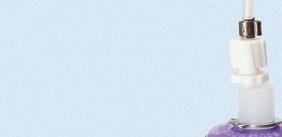

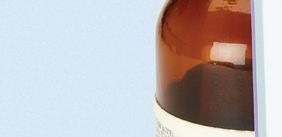










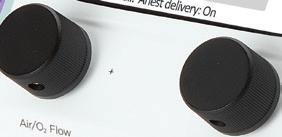






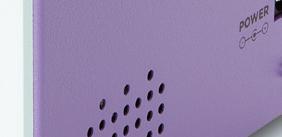
















Surgical Platforms













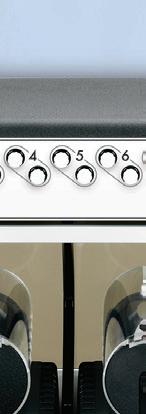






























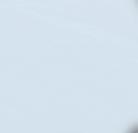






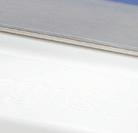




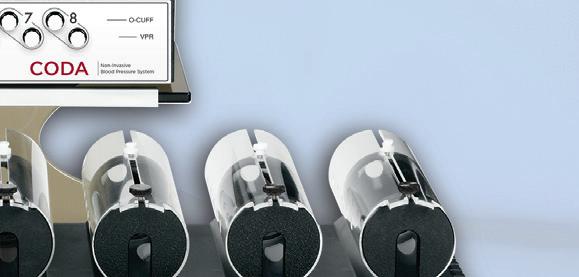
































kentscientifi c.com
to the extreme and design a “flipped classroom”, where lecture watching happens at home, and classroom time is reserved for activities. However, in workforce training, we must consider that our adult learners have lives outside of work and cannot devote time to learning on their own like a full-time student. In my courses, I consciously split the time between passive and active learning evenly: one session is lecture, the next is active practice. Trainees are aware of this format and the expectations of them in each session. It also keeps me honest in limiting the amount of lecturing and leaving some lessons to be discovered during active practice.
How to Create Active Learning
The types of active practices that you create should be aligned with your learning goals and methods of assessment.10 What exact activities you design can be anything from performing hands-on techniques, acting out a process, analyzing data, discussing topics with a partner, exploring models, playing games, working on paper-based problems independently, or even reading on their own. Student Engagement Techniques1 is a great resource for understanding the variety of strategies that qualify as active learning. As long as the trainee is doing something beyond listening, it is considered active engagement of their brain.
If this feels dauting, you can start small by integrating moments of active learning during lectures. One form of this is simply asking a question. Often instructors are met with silence, which can be uncomfortable, but a little hang time allows your trainees the space to think. If you provide the answer too quickly, it sets the stage for more silent responses to future questions. Sometimes there will be a single volunteer who can provide a quick response, and this feels good to you because at least someone is paying attention. However, this also sets the stage for silent responses from those who are struggling with the material, as they assume the know-it-all will provide the response for them to keep you moving forward. The most ideal strategy is to engage the whole class. I have done this through heads-down-thumbs-up, scribing responses on personal white boards, or web-based live-polling integrated into my slide deck. My favorite is PollEverywhere.com, free for up to 25 responses per question. In these anonymous response methods, everyone gets to participate and spend a little time in active learning mode.
Active Learning Benefits All
Teaching by way of lecture will enable success for trainees that learn by way of lecture. However, this is likely only a subset of your trainees. The most preferred instructional method is to deliver the same information in multiple formats to enable learning for all, especially those with disabilities,8 and disadvantaged backgrounds.3 While there is controversy in the academic community as to whether learning styles even exist,5 my trainees still like to proclaim their learning style, a behavior found in Pashler et al. as well.6 Most of them self-identify as hands-on learners (physical), which makes sense because
their occupation is very hands-on. It can be difficult to teach a sub-microscopic process like meiosis to the satisfaction of a hands-on learner. My approach has been to creatively demonstrate meiosis in different ways. First, I lecture with both pictures and videos (auditory and visual), then we act out meiosis where each trainee is a chromosome (physical and social), then we draw the process on paper (visual), then we count chromosomes and identify patterns during each phase (logical), then I provide trainees with exam-like questions to practice on their own during class (solitary). The hope is that each trainee in the room will connect with one of these methods of learning meiosis and increase course performance beyond what lecture alone can accomplish.
Active learning also benefits the instructor; you can witness trainee progress in real-time. It allows you the space to address misconceptions, answer questions, personalize feedback (a pillar of adult learning),2 and provide affirmation in their skills. Additionally, it can quickly bring to light the areas where you could improve your teaching, a humbling process for any instructor dedicated to serving the needs of their trainees.
Kelly LaRue Brackett, PhD is a Senior Manager of Curriculum and Learning Implementation at The Jackson Laboratory in Bar Harbor, ME. She can be reached at kelly.brackett@jax.org
REFERENCES
1. Barkley EF, Major CH. 2020. Student engagement techniques: a handbook for college faculty, 2nd ed. Hoboken, NJ: Jossey-Bass.
2. Brackett KL. 2021. Developing quality workforce training: considerations for the adult learner. Laboratory Animal Science Professional November/December Issue: 30–31.
3. Eddy SL, Hogan KA. 2014 Getting under the hood: how and for whom does increase course structure work? CBE Life Sciences Education 13:453–468.
4. Freeman S, Eddy SL, McDonough M, Smith MK, Okoroafor N, Jordt H, Wenderoth MP. 2014. Active learning increases student performance in science, engineering, and mathematics. PNAS 11: 8410–8415.
5. Newton PM, Miah M. 2017. Evidence-based higher education – is the learning styles “myth” important? Front Psychol 8:444.
6. Pashler H, McDaniel M, Rohrer D, Bjork R. 2009. Learning styles: concepts and evidence. PSPI 9:105–118.
7. Poh M, Swenson NC, Picard RW. 2010. A wearable sensor for unobtrusive, long-term assessment of electrodermal activity. IEEE Transactions on Biomedical Engineering. 57:1243–1252.
8. Roldan SM, Marauri J, Aubert A, Flecha R. 2021. How inclusive interactive learning environments benefit students without special needs. Front Psychol 12
9. Smith MK, Jones FHM, Gilbert SL, Wieman CE. 2017. The classroom observation protocol for undergraduate STEM (COPUS): a new instrument to characterize university STEM classroom practices. CBE – Life Sciences Education 12:618–627.
10. Thompson C, Brackett KL. 2022. Developing quality workforce training: thoughtful course design. Laboratory Animal Science Professional January/February Issue: 24–25.
36 Laboratory Animal Science Professional March 2024
Need something to isten to?


The LASt Word
an AALAS podcast
AALAS is proud to present a rand-new podcast that eatures some o our communit 's rightest minds discussing their research. Listen here:



Make Training Easier with a Scruffing Restraint Device
By Kaitlyn Benjamin, BS, LATG
If you conduct technical training with mice at your institution, a scruffing restraint device is a valuable addition to your training aid tool kit. A scruffing restraint device, such as the ScruffGuard offered by Research Devices, is a small, simple restraint tool with varied applications (Figure 1).1 Our team first found it as part of a search for viable training aids to further promote the 3Rs within our program. We found and created many great tools, but a scruffing restraint device is one of our most frequently used and valuable purchases. A scruffing restraint device is designed to be placed over a mouse so that the loose skin can be pulled through the opening at the top, allowing for effective restraint with a barrier between the mouse and handler.
One of the first applications we discovered for this device was to familiarize new handlers to the concept of scruffing a mouse. People who have never worked with mice can be hesitant to touch them and worried about being bitten. Using this device, we can show trainees how much extra skin is available to be scruffed and start restraining live mice safely. Our program has received great feedback from new trainees who used the device to gain confidence and familiarity with the animals. A scruffing restraint device can also be used when dosing subcutaneous (SC) or intraperitoneal (IP), which are the advertised uses for the ScruffGuard. It’s a great way to introduce someone to SC and IP dosing while greatly reducing their fear of being bit. The benefits extend to the animal too, as it takes fewer animals and fewer attempts to successfully complete training. Additionally, we’ve effectively used scruffing restraint devices to perform nail trims, general health inspections, microchip implantation, and even ear tagging.
As part of our program, everyone is introduced to the ScruffGuards in training, and we keep them in-house to be used as needed (it’s a great tool to use when dosing aggressive mice for new and seasoned technicians alike). This tool has helped our program exemplify the 3Rs as we use fewer animals to reach training signoffs, and the likelihood of both animal and human injury is also reduced.
Using a scruffing restraint device is very simple and easy. A device like the ScruffGuard comes in several sizes and can be used with mice up to 48g.2 For everyone’s



38 Laboratory Animal Science Professional March 2024 TECH TIPS - HUSBANDRY, ENRICHMENT, NEW TECHNIQUES AND TACTICS
Figure 1. Disposable ScruffGuard, size 9.
Figure 2. Vivarium grade towels being used as a soft surface in which to use the ScruffGuard.
Figure 3. Animal on a soft surface with the ScruffGuard placed over top.



safety, it is essential to make sure you’re using the correct size based on the animal’s weight – too small and the animal could be harmed by the downward force applied, too large and the animal may fit its head through the top slit and have access to the handler. To get started, place a short stack of vivarium-grade paper towels or a disposable sponge (about ½ inch thick) on the tabletop to create a soft surface under the mouse where pressure can be gently applied (Figure 2). Next, place the animal on the towels or sponge in the direction you want them to face. Swiftly cover the mouse with the scruffing restraint device so only the tail extrudes on one end and ensure all feet are tucked in (Figure 3). Gently lift the loose skin through the slit at the top of the device and hold firmly between two fingers (Figure 4). Depending on the task, you could keep the mouse on the surface (Figure 5) or lift to expose the ventral side (Figure 6). Once complete, release your hold of the loose skin and lift the device while maintaining a grip on the mouse’s tail.
A scruffing restraint device is easy to use, promotes the 3Rs, and improves overall animal welfare. I highly recommend trying it out in your program to see the difference it can make.
All procedures performed on animals were in accordance with regulations and established guidelines and were reviewed and approved by an Institutional Animal Care and Use Committee or through an ethical review process.
Kaitlyn Benjamin, BS, LATG is a Global Trainer at Pfizer in Cambridge, MA. She may be reached at Kaitlyn.benjamin@pfizer.com.
REFERENCES
1. Benjamin KE, Dunbar J, Kim H. 2023. P147 Assessing Stress Impact and Subcutaneous Dosing Effectiveness of a Scruffing Restraint Device in C57BL/6J Female Mice. AALAS National Meeting, Salt Lake City, UT, October 22-26, 2023. Poster Presentation. Awarded 2nd prize in category.
2. Research Devices Ltd. [Internet] 2020. ScruffGuard. [Cited 21 February 2023]. Available at: https://researchdevices.com/ scruffguard/
March 2024 Laboratory Animal Science Professional 39
Figure 6. Mouse being restrained for an IP injection using a ScruffGuard.
Figure 4. Loose skin gently, but firmly held through the slit of the ScruffGuard.
Figure 5. Mouse being restrained for a SC injection using a ScruffGuard.

2024 Ben Cohen Branch Management Summit
By Sally Westlake, MPA, CAE, ICE-CCP
On February 23rd, thirty-six AALAS members from across the country representing thirty-one AALAS Branches visited the AALAS National Office. They participated in the two-day 2024 Ben Cohen Branch Management Summit. This networking event provided training on critical topics that branch leaders need to run and grow their branches and volunteers.
Our participants were welcomed by our AALAS President, Dr. Robert Quinn, and encouraged to build on the connections and information they would receive during the event. AALAS Staff, led by the Executive Director, Thomas L Joseph, provided information and training on the Role of Branch Leaders, Legal and Financial Issues for Branches, Meeting Planning, Educational and Foundation Resources available to Branches from National AALAS, Membership Recruitment and Engagement, and DIY Resources that can aid branches in their administrative duties.

The Ben Cohen Branch Management Summit is offered every other year. AALAS covers all on-site expenses for one representative from each active branch, and the branch is responsible for transportation to and from Memphis for their participants. The next Ben Cohen Event will be held in 2026!
Sally Westlake, MPA, CAE, ICE-CCP is the Director of Professional Services at AALAS
40 Laboratory Animal Science Professional March 2024
AALAS CONNECTION

WE’ M T YA THERE!
75TH AALAS NATIONAL MEETING NOVEMBER 3 - 7, 2024
Join us for the 75th AALAS National Meeting in Nashville, Tennessee. Each fall since 1950, the American Association for Laboratory Animal Science has held its annual National Meeting. During the five days of the meeting, members and nonmembers come together to enoy the workshops, lectures, poster sessions, and exhibits. The program is designed to have topics relevant to the entire membership. Exhibitors have an opportunity to interact with AALAS members from the academic community, research institutions, government organizations, and commerical companies.
The AALAS National Meeting is the largest gathering in the world of professionals concerned with the production, care, and use of laboratory animals.
1950 2025 th ANNIV E RSARY
AALAS Foundation Updates!
25
25 ON AALAS FOUNDATION CAMPAIGN
Donate $25 on the 25th of each month
Help Celebrate the AALAS Foundation’s 25th Anniversary, Support the $25 on the 25th Campaign!
T25 25 ON AALAS FOUNDATION CAMPAIGN
25th of each month
he AALAS Foundation is thrilled to celebrate its 25th anniversary and is doing so by launching its $25 on the 25th campaign to support the development and launching of its ‘Speak Up & Reach Out’ initiative. This program is designed to bolster our mission of spotlighting the heroic individuals and animals dedicated to advancing medical progress.
You can play a vital role in our 'Speak Up & Reach Out' initiative by joining our $25 on the 25th campaign. Throughout 2024, supporters who donate $25 or more on the 25th of each month will receive a special commemorative 25th-anniversary gift, along with recognition on our website, social media platforms, and at the 2024 AALAS National Meeting.
In 1999, the AALAS Foundation officially became a standalone 501(c)(3) nonprofit organization. Since then, our commitment has been unwavering, focused on raising public awareness about the indispensable role of animals in biomedical research. Additionally, we strive to shape the future workforce by imparting knowledge to students, enlightening them about the fascinating career opportunities available in the realm of Laboratory Animal Science. Join us as we continue our journey, dedicated to education and fostering a promising future in the field.
Over the past twenty-five years, the AALAS Foundation has achieved numerous milestones, all made possible by the support and dedication of our generous donors and volunteers.
Help us reach our 25th Anniversary goal by contributing a $25 donation on the 25th of each month. Don't worry if you miss the 25th – your donation on any other date in the month still counts! You can also make up for missed donations in subsequent months. Consider the convenience of signing up for automatic monthly donations to effortlessly support the AALAS Foundation's mission. Together, let’s make a meaningful impact!
Donate $25 on the 25th of each month
With your help, we look forward to another successful twenty-five years of advocacy and providing free resources to assist AALAS members with their public outreach activities.
Scan the QR code below to join the $25 on the 25th campaign and make a difference today!

42 Laboratory Animal Science Professional March 2024
FOUNDATION
25
CAMPAIGN
AALAS Foundation Announces Its “Research" Contest!
Sponsored by Charles River Laboratories
It’s time to start tuning up your strings and gathering up your paint brushes!
The AALAS Foundation is proud to present the exciting “In Tune With Research” contest!
Are you ready to embark on a creatively fulfilling journey that not only promises heaps of fun but also contributes to a worthy cause? Join the AALAS Foundation as it celebrates the vibrant spirit of Nashville, Tennessee, known as The Music City, by challenging participants to adorn a 14” wooden guitar in whatever way your creativity leads you. An official wooden guitar will be shipped to contestants upon registration and payment of entry fee. Let your creativity shine as you join us in celebrating the remarkable intersection of art and science!
To Enter the Contest: A $35 contest entry fee and a 2024 “In Tune With Research” Contest entry form must be completed and received by the AALAS Foundation no later than September 3rd, 2024. Entry fees and registration may be made online via the official online registration form, or, by check, money order, or credit card.
Simply scan the QR code below for more information and to register for the contest - or go online at https://tinyurl.com/ in-tune-Research
We invite all branches, companies, institutions, and individuals to participate actively in this initiative. The primary objective of this event is to generate funds that will aid the AALAS Foundation in its mission to educate the public about the significance of biomedical research and the compassionate professionals dedicated to advancing the field of laboratory animal science.
Don’t miss out on this fun opportunity to show off your creativity and help support the AALAS Foundation at the same time! Contact foundation@aalas.org for questions.
 Sponsored By
Sponsored By

March 2024 Laboratory Animal Science Professional 43 CAMPAIGN month

44 Laboratory Animal Science Professional March 2024 —Advertising List— Contact us for more information. Visit us at aalas.org or call Heather Lampi at (901) 754-8620. Advertise in LAS Pro COMPANY WEBSITE PAGE Allentown LLC www.allentowninc.com back cover Ancare Corp www.ancare.com 29 Bio-Serv www.bio-serv.com 15 Braintree Scientific Inc. www.braintreesci.com 33 Clear H2O Inc www.clearh2o.com 5 E-Z Systems Inc. www.ezsystemsinc.com 13 Hilltop Lab Animals Inc www.hilltoplabs.com 28 Kent Scientific Corporation www.kentscientific.com 35 PMI LabDiet www.labdiet.com inside front cover Virox Technologies www.peroxigard.com 1 VRL Laboratories-USA www.vrlsat.com 32 American Association for Laboratory Animal Science We Like To Socialize. Want to get to know us better? It’s easy. Just search for AALAS on Facebook, LinkedIn, and Twitter. socialmedia.indd 1 9/25/2013 11:23:51 AM

Essential online training for investigators, technicians, veterinarians, managers, and IACUC members in the laboratory animal science field.
260+ courses on animal research and compliance – courses customizable
Translatable instantly to 100+ languages – website and courses
Specialty certificate programs on animal biosafety, transgenics, and research support
Training documentation and management If

your organization is an AALAS institutional or commercial member, you save even more! Learn more about AALAS membership: https://www.aalas.org/membership onlinelearning@aalas.org American Association for Laboratory Animal Science 9190 Crestwyn Hills Drive, Memphis, TN 38125-8538 (901) 754-8620 | (901) 753-0046 www.aalas.org | info@aalas.org


02-2024 Learn more at www.AllentownInc.com Visit our online store at Store.AllentownInc.com Your Global Solutions Provider Finding Ways to Serve You, Better. HOUSING AIRFLOW TECHNOLOGY WASHING/ AUTOMATION STERILIZATION DECONTAMINATION COLONY HEALTH MONITORING VIVARIUM DESIGN SOLUTIONS

















































































































































































































































































































 Sponsored By
Sponsored By




